By David H. Lippman
“It is not a question of aiming for Alexandria or even Sollum,” the message read. “I am only asking you to attack the British forces facing you.”
This pleading message from Italy’s Benito Mussolini was addressed to his Supreme Commander in Libya, Marshal of Italy Rodolfo Graziani, a 6-foot-tall, firm-jawed officer with a reputation for recklessness … earned against rebellious Arab tribesmen and Ethiopians.
Against the British Western Desert Force, Graziani was far less resolute this July 17, 1940. He led the numbers game on the Libyan-Egyptian border, an army of 250,000 facing a British force of barely 30,000. Italy fielded 400 guns to the British 150, 190 fighters to the British 48, 300 Italian tanks to 150 British. On paper, Britain had no chance.
But behind the numbers and glittering Fascist regalia lurked serious weaknesses that Graziani himself realized. The Italian 10th and 5th Armies in Libya were marched on foot, while the British rode in trucks. Two of Graziani’s six divisions were Blackshirt militia outfits clad in fancy black uniforms, but they were poor soldiers. They ignored realities of warfare in favor of romantic bayonet charges. His army as a whole was badly trained. Officers strutted about like gigolos, neglecting their men. Italian troops had done badly in Spain against Republicans and in Ethiopia against tribesmen.
Italian divisions had been reduced from three regiments each to two each, a paperwork shuffle that created more divisions but weakened their combat strength and required the Italian Army to field more headquarters units.
Just as important, the Italian forces were poorly equipped. Armored cars dated back to 1909. The L3 tank only mounted two machine guns, which could not match the British Matilda with its 80mm armor and 40mm gun. The underpowered and thinly armored M11 was little better. Its 37mm gun could not traverse. The heavyweight M13 packed a 47mm gun, but crawled at 9 miles per hour.
Italian troops were short of antitank guns, antiaircraft guns, ammunition, and radio sets. Artillery was light and ancient. The 47mm antitank gun lacked a splinter shield, and British troops could capture intact guns surrounded by dead gunners.
To ease his balance-of-payment problems, Mussolini sold off his newest aircraft and weapons to foreign buyers such as Spain and Turkey, while equipping his forces with field guns from 1918. The army had to borrow trucks from private firms just to hold parades of its motorized divisions in peacetime.
The Beretta pistol and machine gun were outstanding weapons, but the Mannlicher-Carcano rifle, 1881 model, suffered from low bullet velocity. Breda machine guns were clumsy to operate and jammed easily. The Model 35 “Red Devil” hand grenades had a cute trick of exploding in the hands of their users.
By comparison, the British troops used the reliable .303-caliber Lee Enfield rifle, the superb Bren and Vickers machine guns, the 25-pounder field-artillery piece, and the safe and deadly Mills grenade.
Italian ration packs included pasta meals that had to be cooked in boiling water, which was a scarce commodity in the North African desert, requiring even more water trucks and panniers that Mussolini simply did not have. But the Italian command did offer its troops a mobile brothel, which followed the advance.
In the air, Graziani could sortie 84 modern bombers and 114 fighters, backed up by 113 obsolescent aircraft. The Savoia-Marchetti SM-79s looked useful. But while the Fiat CR 42 fighter was one of the most maneuverable biplane fighters around, it was completely outclassed by the British Hawker Hurricane.
Flying in the desert was tough enough. The RAF had great experience at “tropicalising” its aircraft to keep out sand particles; the Italians did not. Both sides’ pilots lived in primitive bases that were dust and sand in summer, bog marsh in winter, made up of little shanties whose walls were created from empty jerry cans and packing cases, and suffered from water shortages and fly-infested bully beef. Aircraft often broke down after 30 hours’ use. Aviation fuel vaporized in tanks, making them liable to burst in the joints and explode.
Nor would the Italian Navy help. They had no aircraft carriers, they were short on fuel and manpower, submarines were commanded by junior ensigns, and the British had broken their codes.
But most important, Italy was hopelessly outclassed by her British opponents. The British Army in Egypt had trained for years in the appalling desert climate. It consisted of crack regiments like the Coldstream Guards and the Argyll and Sutherland Highlanders. The British 7th Armoured Division was its model mobile force, and it was backed up by the 4th Indian Division and the 6th Australian Division, the elite of both nations’ armies.
Finally, both sides were preparing to fight a war in the most inhospitable climate imaginable, Egypt’s “Western Desert.” This sprawling sand sea, occasionally pocked by mud huts or the odd well, was brutally hot by day and freezing by night. The only paved road ran along the coast and was unfinished. Dusty trails crisscrossed the rest. Vehicles that traversed them left their tracks in the hard sand, which are still visible to today’s oil explorers.
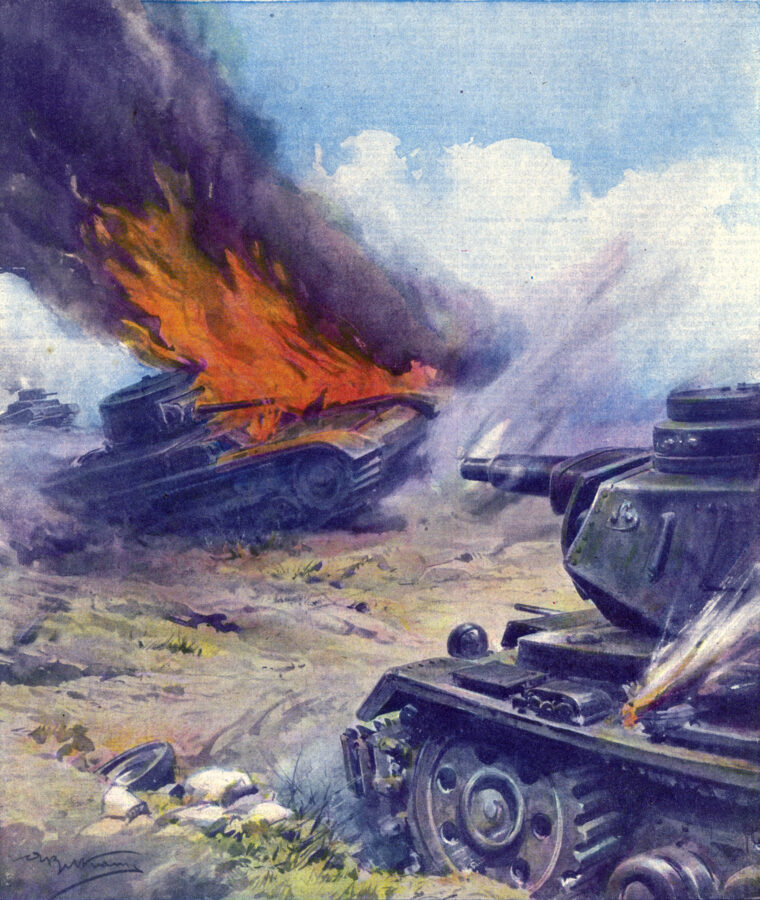
None of this mattered to the bombastic Mussolini, who so far had thoroughly embarrassed himself in an effort to gain glory for Italy. After declaring war on France, his troops had been soundly defeated in the Alps. Now his forces were collapsing in Ethiopia. Il Duce needed a victory. Graziani was to provide one.
Graziani’s answer was to order General Mario Berti’s 10th Army, consisting of three corps, to be ready to attack on August 27. Graziani proposed to send the ill-trained 21st Corps on the northern Coast Road to Sollum, across the border, while the Libyan Corps and the motorized Maletti Group of seven tank battalions would attack on the south side of the escarpment that ran parallel to the sea. The offensive would be backed by 300 aircraft of the 5th Squadra.
Graziani sent these plans to Commando Supremo in Rome, and Mussolini was pleased; however, the marshal was not actually intending to launch this impressive-sounding attack … it was merely a paper exercise to soothe Il Duce. Graziani lacked transport for the southern swing.
But as soon as Graziani sent his plea for a postponement, Mussolini ordered his vacillating marshal to attack on September 9 or be sacked. Mussolini’s son-in-law and foreign minister, Galeazzo Ciano, wrote, “Never has a military operation been undertaken so much against the will of the commanders.”
Faced with dismissal, Graziani shuffled his plans. The southern swing was abandoned, the Libyan Corps moved near the coast, and the 23rd Corps under General Annibale “Electric Whiskers” Bergonzoli was ordered into the primary attack. The 62nd Marmarican and 63rd Cyrene Divisions, joined by the 1st and 2nd Blackshirt Divisions, would lead the assault.
From the start, the Italian offensive was a bungle. Vehicles’ engines overheated. Maletti Group got lost. Radio Rome announced the impending offensive to the world and British Intelligence. When Graziani’s men finally moved on September 10, their artillery fired a massive bombardment on positions the British had already abandoned. The British 11th Hussars, screening the Italian move, had a good laugh watching Maletti Group try to figure out its location from compasses, speedometers, and maps.
The entire 1st Libyan Division, including a regiment of paratroopers who gloried in the title but had never learned to jump out of an aircraft, attacked Sollum, which was held by a single platoon of Coldstream Guards. The British lay mines and withdrew, turning the Italian drive into a laborious task of mine-clearing.
The British were led by two brilliant men, Lt. Gen. Sir Richard O’Connor, who commanded the Western Desert Force and General Sir Archibald Wavell, Supreme Commander of Egypt. O’Connor, Anglo-Irish, was a former infantryman who saw the value in tanks and mobility. Wavell, laconic in speech but gifted with the pen, possessed a fluid understanding of desert warfare.
O’Connor, unsmiling, bird-like, dour, introspective, and shabbily dressed, detested publicity of any sort, and was quiet and modest. He was also one of the great commanders of his time. His plan to face Graziani was simple—delaying actions and withdrawals to drag the Italians beyond their supply lines. Then he would counterattack.
Wavell thought the same. The day after Graziani moved, Wavell ordered O’Connor to prepare plans for a drive on Tobruk. Yet Wavell himself was under siege. The Middle Eastern Theater involved highly complex political relations with Arab leaders, a source of endless headaches. Wavell also had responsibility for East Africa, where Mussolini’s troops were threatening the Sudan. Palestine had to be policed. Vichy French Syria had to be watched. Wavell’s relations with Prime Minister Winston Churchill were cool, and England, bracing for invasion, had little with which to reinforce Wavell. The field marshal was responsible for parts of two continents and nine countries.
When Wavell promised London unspecified offensive action, the War Office sent him 154 tanks—which brought Wavell up to parity with the Italians—along with 48 antitank guns, 48 25-pounder (86mm) field guns, and 500 Bren guns.
It took Graziani’s men four days to reach Sidi Barrani, where they stopped, having overextended their supply lines, exhausted their infantry, and worn down their vehicles. Graziani needed to extend the metalled road and water pipeline to his frontline units. Italian casualties were 120 dead and 410 wounded. The British had lost only 40 men. Radio Rome broadcast that “all is quiet and the trams are again running in the town of Sidi Barrani,” which was, in fact, a collection of mud huts.
Graziani’s men began digging in, creating a little string of fortified camps, none of them within range to support each other. The camps were formidable affairs, a mile square, surrounded by stone walls. Inside, the Italians built messes, sleeping quarters, and hospitals, along with mine fields, artillery emplacements, and machine-gun nests. All the defenses faced east. Graziani further scattered his tanks among the camps, thus denying himself a mobile reserve. His engineers also started building a monument to commemorate his 60-mile drive.
Sidi Barrani was as far as Graziani was prepared to advance. He fired off telegrams to Rome demanding more trucks to haul his supplies. When his requests were turned down, he sought more trucks than were in the whole Italian inventory and also demanded 600 mules.
On October 26, Mussolini retorted, “Forty days after the capture of Sidi Barrani, I ask myself the question, to whom has this long halt been any use—to us or to the enemy? I do not hesitate to answer, it has been of use, indeed, more to the enemy … it is time to ask whether you feel you wish to continue in command.”
Graziani wired back to say he would resume the offensive on December 15.
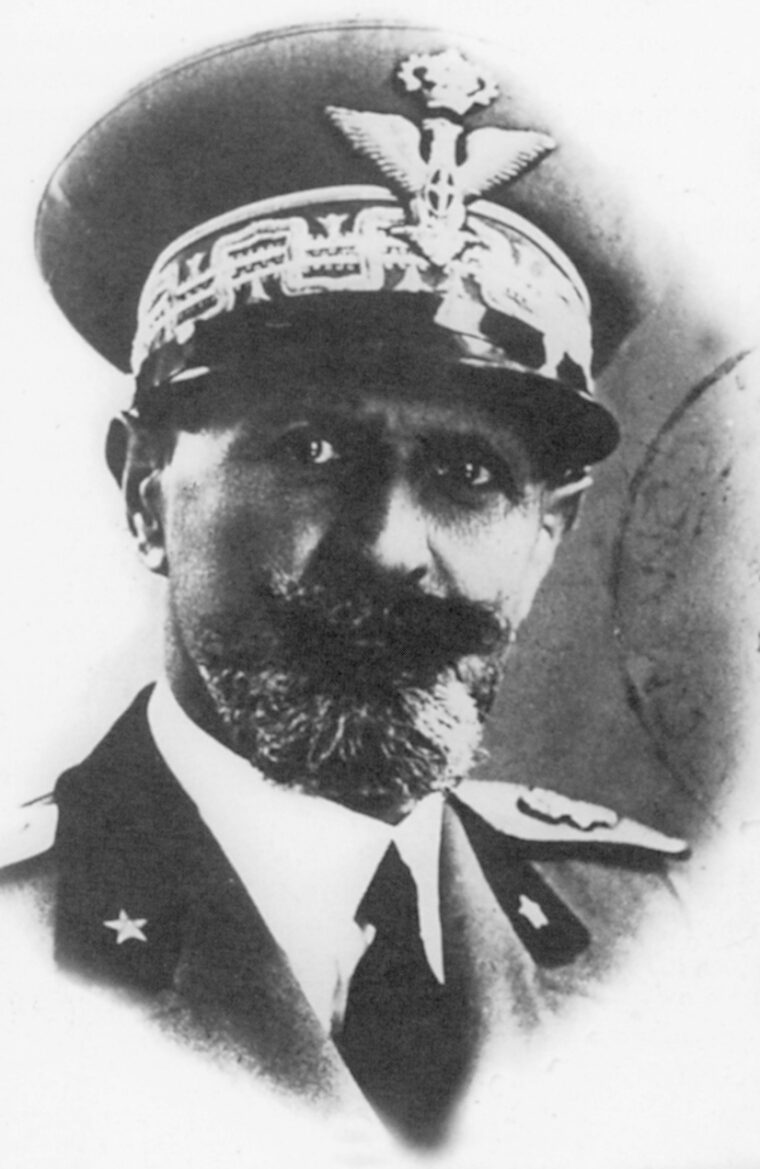
Now events accelerated. On October 28 Mussolini invaded Greece, hoping as ever for a quick victory. Instead his legions were defeated in the Albanian mountains. Britain had to support its new ally. On November 11, Fleet Air Arm Fairey Swordfish torpedo-bombers attacked Taranto, sinking an Italian battleship and damaging two more. The Regia Marina fled to western Italy, taking it out of the North African game. Wavell could now look to the offensive.
O’Connor devised a simple and straightforward five-day raid, called Operation Compass, that would take advantage of the thinly spread Italian forces. Between the 63rd Division’s camp at Rabia in the south and Maletti Group at Nibeiwa to the north was the 20-mile undefended Enba Gap. O’Connor planned to pour the 4th Indian Division and 7th Armoured through it and drive to the sea, thus trapping four Italian divisions from behind. The 16th British Brigade, reinforced by a battalion of motorized Free French Marines, would be the anvil of this hammer. Wavell approved the plan without telling O’Connor that, as soon as the raid was over, the 4th Indian would be withdrawn to Sudan.
Planning was detailed. Thanks to RAF reconnaissance, O’Connor had precise photo-mosaics of Italian vehicle routes, so he knew how to avoid Graziani’s mines. To maintain surprise, British leave was not stopped, troops were not given notice of the offensive, forward dumps were called precautionary, and even the medical teams were not advised to expect extra casualties. General O’Moore Creagh, commanding 7th Armoured, was out sick with an abscessed tongue; the 4th Armoured Brigade commander, Brigadier J.A.L. “Blood” Caunter, took over. There would be no artillery firing for registration; instead, O’Connor’s guns would blast away at the eastern side of the Italian defenses at the precise time his infantry and tanks hit them from the west. That would require an approach march through the enemy defense zone and a start line in its rear, both violations of staff college procedure.
Another problem O’Connor faced was that the whole paraphernalia of offensive warfare in the desert had not even been invented yet. He lacked tank transporters, tank-recovery vehicles, and tank-towing vehicles. All British vehicles had to carry themselves everywhere, which wore out their engines, consumed fuel, and exposed them to natural and man-made hazards. The British fuel can was inferior to its German rival and spilled a great deal of petrol. Trucks to carry everything from toilet paper to tank shells were in short supply.
That ubiquitous marvel of the latter half of the war, the American deuce-and-a-half-ton truck, had not appeared yet either. The British had to use Bedford army lorries, which had nowhere near the reliability or capacity of their later American replacements. To solve this logistics gap, O’Connor ordered supply dumps to be laid out ahead of his troops’ advance. With the supplies laid out, O’Connor’s vehicles would simply carry men and guns.
“I can’t describe my feelings,” O’Connor wrote later, “other than to say that I was sure it would be successful. It was a sound plan, a bit complicated perhaps, but I had every reason to rely on my commanders, their staff and the troops—all who were in good heart.”
Meanwhile, the Italians dithered. Graziani himself intrigued to remove the chief of staff, Marshal Pietro Badoglio, who resigned November 26. A few days later, 10th Army’s commander, General Berti, went home to Italy on sick leave, leaving General Gariboldi in field command. That caused command paralysis, as no replacement for Badoglio was assigned until December 6, when Marshal Ugo Cavallero took over.
On the evening of December 8, O’Connor began his attack with air and naval bombardment of the Italian camps. The Cameron Highlanders’ bagpipes led the men into battle under a full moon and starry sky. The British moved forward, troops dragging extra grenades and three days’ rations, while wearing heavy underwear, overcoats, and woolen sweaters against the cold air. Vehicles of the 4th Indian Division rumbled into position and were ready to attack the Italian camps from the west by dawn. It was the first British offensive since 1918, and not only were the Italians and Germans surprised—but the Americans, as well.
The advance was almost an anticlimax. The Italians did not know the British were upon them until they heard the rumble of Matilda tank treads and the plaintive skirl of Scottish bagpipes. The 11th Indian Brigade charged into Maletti Group’s Nibeiwa Camp, defended by 20 tanks, 12 field guns, and 2,500 Libyans. The tanks were caught with their crews at breakfast and quickly disabled. The Matilda tanks’ 78mm armor was impervious to Italian antitank weapons. Italian troops watched in horror as their shells bounced off the Matildas’ armor. In 10 minutes, the British destroyed as many tanks.
“Frightened, dazed or desperate Italians erupted from tents and slit trenches, some to surrender supinely, others to leap gallantly into battle, hurling grenades or blazing machine guns in futile belabour of the impregnable intruders,” wrote G.R. Stevens in his history of the 4th Indian Division. “Italian artillerymen gallantly swung their pieces on to the advancing monsters. They fought until return fire from the British tanks stretched them dead or wounded around their limbers.” Maletti himself leaped up from his bed, firing his submachine gun. A British burst cut up the general, and he staggered back into bed to die. His son was captured, along with more than 2,000 prisoners and 35 tanks. The Indians lost 56 officers and men.
As the Nibeiwa fighting died out, the Italians shuffled down
the Coast Road to Mersa Matruh, where astonished British MPs were overwhelmed. The Red Caps passed out barbed wire and wood and told the Italians to build their own stockades. The Italians did. Back at Nibeiwa, other Italian troops started switching sides. When Italian engineers saw British artillerymen digging gun emplacements, the Italians broke out their picks and shovels and started helping. Other Italian troops showed the British how to make pasta. One Pittsburgh-born Italian told his captors: “If I could get my hands on that bastard Mussolini, I’d kill him right now.”
The 5th Indian Brigade jumped the Tummar camps from behind, hitting the mostly native 2nd Libyans. At Tummar, Italian artillerymen fought to the last, but their shells bounced off British tanks. Nearly 4,000 Italians were captured, along with considerable wine stocks, and the 2nd Libyan Division’s commander, General Piscatori. He turned up with 13 senior officers, all booted and spurred. New Zealand truck drivers raced at 30 mph to get the 1st Royal Fusiliers to battle. When the Kiwis reached the front, they abandoned their vehicles and joined in the attack.
British and Indian troops swarmed all over the camps, finding donkeys and mules everywhere, braying helplessly. War correspondent Alan Moorehead was stunned to find that Italian officers lived in tents with clean bedsheets, and chests and drawers full of dress uniforms, medals, and braid. Moorehead himself went through 30 dugouts, finding wine, bread, mineral water, liqueurs, and canned vegetables. The Italians also had a huge hospital, which both sides’ doctors manned to care for the wounded.
The British also found vast quantities of field telephones, radios, typewriters, guns, ammunition, and trucks. British workshops got 15 captured M13 tanks running, but the 10-ton Italian trucks were less useful. Their tires shook the vehicles to pieces. The battlefield was also covered with paper left behind by Italian recordkeepers.
Meanwhile, 7th Armoured’s tanks had a busy advance. Sergeant Harry Kirkham of 4th Brigade’s 6th Royal Tank Regiment (RTR) found Italian vehicles surrendering left and right. His driver found a cash box with 35,000 lira, which delighted the crew. The 7th Armoured roared up on Buq Buq, held by 64th Division. Soon a British officer radioed, “Up to second ‘B” of ‘Buq Buq.’” The 7th Hussars reported, “As far as I can see we have captured acres of officers and hundreds of acres of men.” By the end of December 10, the 4th Blackshirt and 1st Libyan Divisions were surrounded, with the British taking Sidi Barrani at 4:40 pm. A total of 20,000 prisoners went in the bag for only 700 British casualties. The Leicesters reported, “A formidable body of men emerging from their trenches … as if in mass attack; but they came stumbling, with their hands up, 2,000 Blackshirts had had enough. A rot had set in.”
Sidi Barrani, where Radio Rome said the “trams were running,” turned out to be 20 houses, all wrecked, including two small brothels, both of which were open for business. The British found an abandoned Italian field hospital, complete with an appendicitis patient lying on the table, with instruments sticking out of him. The only thing that was intact was Graziani’s 6-foot-high monument, decorated with fasces, with the inscription that, “despite wind and sand and the wiles of the enemy,” Egypt and Libya were inseparably joined together under Fascist rule. The British disposed of the monument with armor-piercing shot.
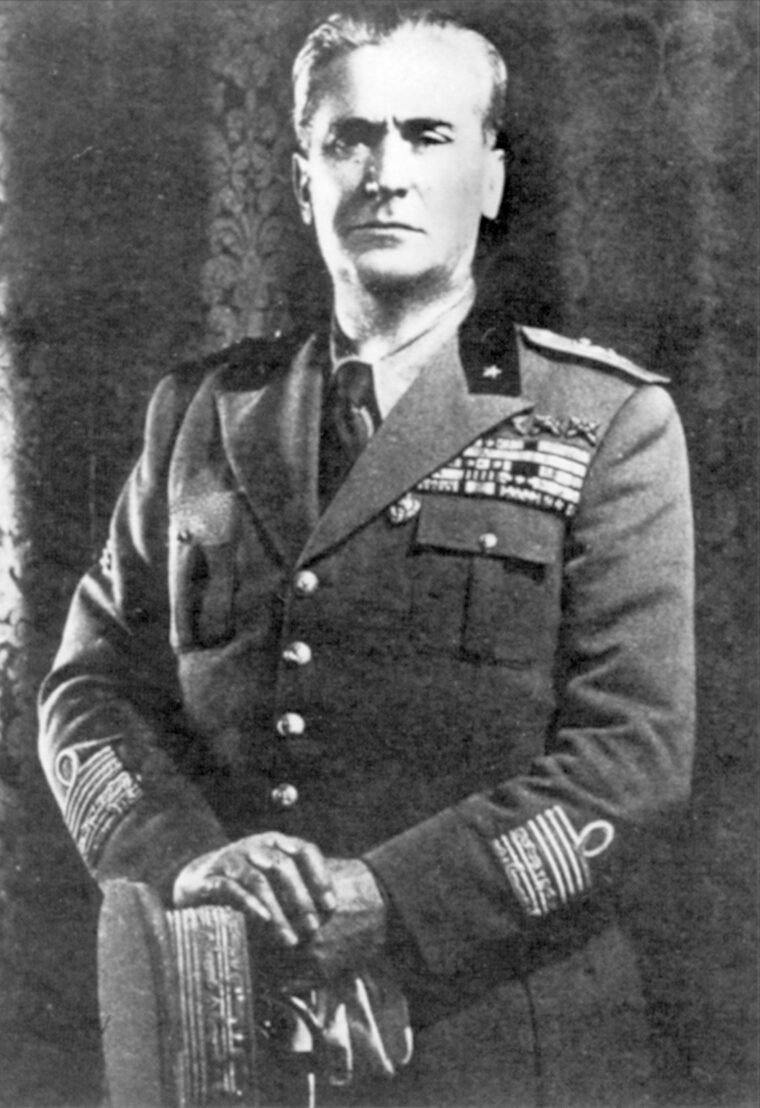
The Arabs and paratroopers of 1st Libyans fought hard on the 10th amid a howling sandstorm, but on the 11th the division began to disintegrate. The disaster fell on the head of General Gallina who commanded the 1st and 2nd Libyan Divisions. His water supply and communications had been cut. “Territory between Sidi Barrani and 2nd Libyan Division infested by mechanised army against which I have no adequate means,” he radioed Graziani.
It fell on Mussolini in Rome, too. “News of the attack on Sidi Barrani comes like a thunderbolt,” wrote Foreign Minister Ciano on the 10th. “At first it doesn’t seem serious, but subsequent telegrams from Graziani confirm that we have had a licking.” Mussolini took the news calmly, talking of how it would affect Graziani’s prestige. Nazi Propaganda Minister Josef Goebbels was calm, too, writing in his diary, “One can only comfort oneself with the fact that the Italians always suffer defeats but in the end always end up on the winning side. So it will be this time, too.”
On December 11, the 2nd Blackshirts and the 64th Cantanzaro Division tried to flee but ran smack into British tanks and disintegrated. Alan Moorehead watched in amazement as 7,000 men of the Cantanzaro Division, four abreast, in green coats and cloth caps, cheerily plodded into captivity, guarded by two Bren carriers.
On the same day, O’Connor counted 20,000 POWs, 180 captured guns, and 60 tanks, for a cost of 600 casualties. And 250 of those casualties came from the 16th Indian Brigade. RAF Hurricanes had routed Italy’s CR 42s, and remaining Italian forces were in full flight. The obvious thing would be to follow up success.
But as O’Connor sketched his next moves, he received a telegram from Wavell ordering the detachment of the 4th Indian Division to the Sudan. The 6th Australian Division would replace it, but not right away. That would leave O’Connor with only the 16th British Brigade, 7th Armoured (whose tanks needed repair), and Selby Force with its French Marines, not enough to guard POWs, collect abandoned vehicles, or provide water for all.
The logical move was to halt the advance, and Wavell was advising just that. Instead O’Connor, an admirer of Stonewall Jackson and Ulysses S. Grant, decided to maintain the pace of the offensive. “I was always intrigued by the way Grant used his cavalry,” O’Connor wrote later. “But I don’t suppose I tried to apply it. I think the way I used the tanks in that campaign was the only possible way of doing so. Their employment was no headache and the only common sense thing at the time.”
O’Connor ordered the 2nd New Zealand Division, still assembling back in Cairo, to send every available transport unit to bring fuel and ammunition forward and POWs back. The 4th New Zealand Brigade provided mechanics to repair the fleets of captured Lancia and Fiat trucks. “Keeping trucks moving was as often a test of improvisation as of driving skill,” recorded the official history of the New Zealand Supply Column dryly. “To abandon a broken-down truck was to surrender it forever; by next day it would be stripped to the chassis.” Sandstorms covered everything in yellow, reddening eyes and clogging throats.
On the night of the 11th, Graziani finally took action. He pulled the Italian 62nd and 63rd Divisions under a sandstorm. “Recognizing the impossibility of damming the enemy march on the desert flats, I thought it essential to put to full use the unique natural obstacle at Halfaya, while throwing strong reinforcements into Bardia and Tobruk,” he signaled Mussolini. To defend the pass, the only gap in the long escarpment, Graziani threw in an armored brigade and Bergonzoli, a Spanish Civil War veteran whose huge beard was reputed to give off sparks, hence the nickname “Electric Whiskers.”
In Rome, Mussolini faced the loss of four divisions, two of them Blackshirts, with remarkable coolness. Mussolini “maintains that the many painful days through which we are living must be inevitable in the changing fortunes of every war,” Ciano wrote.
While Graziani cut orders from his 60-foot-deep Cyrene bunker, O’Connor did the same from his staff car in the desert. The 7th Armoured Division was to keep charging. The 3rd Hussars, in light Mark VI tanks, tried to do so, but beyond Buq Buq they ran into heavy Italian artillery and airpower. O’Connor called for RAF Gloucester Gladiators to intercept, but the biplane fighters were out of action after the exertions of the past few days. O’Connor used his superior 25-pounder guns, and the offensive, despite the loss of a number of tanks, was on again. The 7th rumbled forward, heading for Halfaya Pass and Fort Capuzzo, the white brick fort guarding the Libyan border. Advancing British troops found abandoned Italian steamrollers and heavy equipment used to finish the Coast Road. A giant bust of Mussolini was inscribed, “He who does not keep moving is lost.” British troops hurled the statue into the sand.
The offensive so far was turning into a lark, with 14,000 POWs in the bag, cheerfully organizing their journey back to Egyptian cages. Despite losses of vehicles to gunfire and maintenance, O’Connor’s force was riding the crest of a wave, boosting morale back in England.
Now O’Connor moved on the small Egyptian border port of Sollum, through which the Royal Navy could resupply him. Then he could push on to Bardia. The problem was to move 38,000 POWs and the 4th Indian Division back and bring his supplies and the 6th Australians up. The New Zealand drivers raced back and forth, hauling Australians west and Italian POWs east.
The pursuit went on. On the 12th, artillery slowed the British. Exhausted troops drove along in the dark under blackout conditions, wearied by noise, repairs, smoke, heat, and cold. Next day, O’Connor stripped 7th Armoured’s support group of vehicles so that he had more trucks to keep his tanks topped off with gas.
In his bunker, Graziani showed more vigor with his signal pad than with his army. He wired Rome in a panic to say that Cyrennia was lost, recommending retreat to Tripoli, claiming the battle was “a flea against an elephant.” Churchill later wrote: “The flea had devoured a large portion of the elephant.” Mussolini said, “A peculiar flea, one that between Sidi Barrani, Bardia and Tobruk had at its disposal more than 1,000 guns.” Referring to Graziani, Il Duce added, “Here is another man with whom I cannot get angry, because I despise him.”
On December 14, the 7th and 4th Armoured Brigades came under heavy Italian air bombardment. SM 79s ranged unmolested because Wavell had been forced to send some of his aircraft to Greece. Next day, the British offensive resumed.
In Cyrene, Graziani faced the inevitability of losing Sollum and Fort Capuzzo and pulled the bulk of his force to Bardia. On the 16th, the British hit Sidi Omar, which was held by the 62nd Division amid mine fields and a white-stone Beau Geste fort. Lacking infantry, the British bombarded the fort with 25-pounder guns while the 2nd Royal Tank Regiment’s Matildas charged the place in best cavalry fashion. The lead tank roared into the center of the fort, where the tank commander traded pistol shots with stunned Italians. Before the defenders could overwhelm the Matilda, its squadron mates arrived and the Italians collapsed.
By the 20th 7th Armoured, despite exhausted crews and vehicles, had seized Capuzzo and Sollum, but Bergonzoli had been able to muster a considerable defense in Bardia—four divisions of 21st Corps plus fortress troops, border guards, a 12-foot-wide antitank ditch, concrete blockhouses, and remnants of fleeing units. Eighteen miles of defenses ringed the port’s white-walled houses and straight streets. Altogether Bergonzoli had 45,000 men, 400 guns, and a brigade of M13 tanks. He also had a message from Mussolini, which read, “I am sure that Electric Whiskers and his brave soldiers will stand at whatever cost.” Bergonzoli signaled back, “In Bardia we are, and here we stay.”
O’Connor hurled RAF Vickers Wellington bombers and three battleships, including HMS Valiant, against Bardia. On board Valiant was Lieutenant Prince Philip, the future Duke of Edinburgh. HMS Aphis, a gunboat that had come all the way from the Royal Navy’s Yangtze River patrol in China, sank several coasters in Bardia harbor. O’Connor also cut loose Maj. Gen. Iven Mackay’s 6th Australian Division, the first Diggers to see action in World War II. The division, a mixture of “old sweats” and new volunteers, rode trucks painted with the division’s symbol, a leaping kangaroo, to the battle area. The Australians were eager to find out if Bergonzoli’s beard really gave off sparks.
The Australians were weighted down with 70 pounds of kit per man and restricted to a half-gallon of water per day. A man could shave or wash, but not both. “The discomforts the desert imposed were greater than those inflicted by the enemy,” the Australian official history noted. The Australians were eager to fight. They had already done so in every bar from Sydney to Cairo, but suffered a variety of shortages and had training deficiencies. Some men had yet to hurl a single grenade. But their letters home showed they were eager to uphold the great fighting traditions of the World War I Australian Imperial Forces.
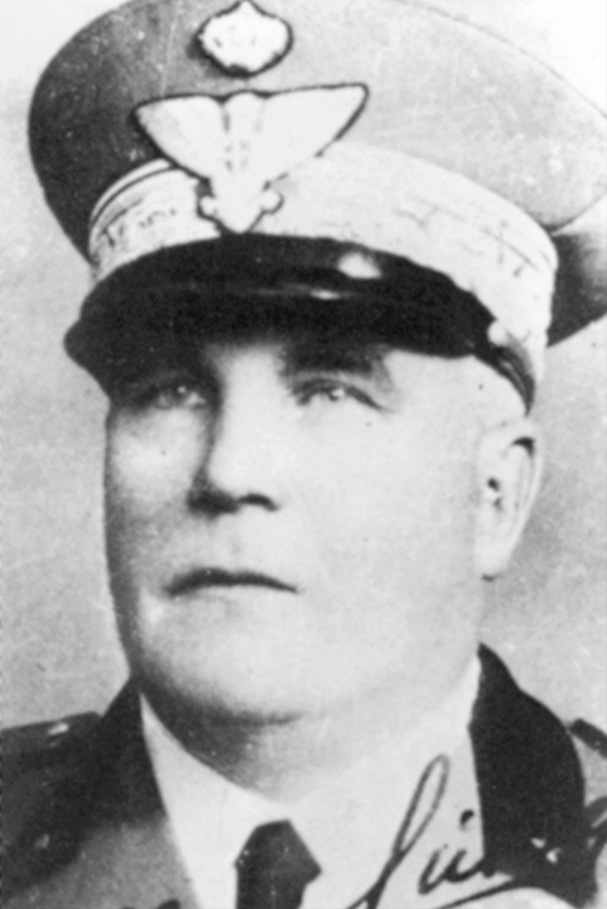
Mackay planned to assault Bardia with 16th and 17th Brigades, estimating the Italian defenses had only 20,000 men. The valuable armor would prevent the escape of the garrison and move on to Tobruk when Bardia fell. The infantry would drive a wedge through the center of the Italian line, cutting roads and enabling his men to assault the Italian positions from behind.
Supplies were still short—11,500 sleeveless leather jerkins to keep the Diggers warm did not arrive until January 1 and 350 wire cutters did not show up until January 2, the night before the attack. Three hundred pairs of gloves to protect the hands of men cutting wire were handed out as the infantry moved into their assembly areas, but tape to mark attack routes never arrived. Three-inch mortars did, but without sights; a 17th Brigade officer hopped into a jeep and drove all the way to Cairo to pick the sights up.
“Tonight is the night,” wrote 16th Brigade’s official diarist. “By this time tomorrow [5 pm], the fate of Bardia should be sealed. Everyone is happy, expectant, eager. Old timers say the spirit is the same as in the last war. Each truckload was singing as we drove to the assembly point. The brigade major and party taped the start-line—historic, for it is the start-line of the Australian soldier in this war.”
At 2:30 am the Australian troops, looking enormous in jerkins, greatcoats, and tin hats, lugging 150 rounds of ammo and three days of bully beef, drank a tot of rum and moved forward under a heavy barrage, singing “South of the Border.” Engineers led the way with wire cutters and bangalore torpedoes to remove Italian wire. When the torpedoes went off, the Australians charged through the wire.
The intense artillery bombardment thoroughly frightened the 1st Blackshirt Division, whose only combat experience had been beating helpless civilian “enemies of the state” back in Calabria. Now the Fascist goons found themselves under heavy shelling and facing enormous Australian infantrymen at point-blank range. So the Italians surrendered. Some thought the Aussies’ leather jerkins were bulletproof.
Australian troops marched at ease through the positions, passing Italian troops waving white cloths. Sergeant Ian McIntosh of New South Wales, a World War I veteran, led 24 men to capture three field guns, an antitank gun, 12 machine guns, and 104 POWs. Lieutenant A.C. Murchison of Newcastle led a bayonet charge that caused the Italians facing him to surrender. As Murchison moved forward the surrenders took on a chain reaction, and the Aussies were soon thumbing the Italians back, yelling “Avanti.” The company next to Murchison took 300 POWs.
“It was now half an hour after midday. By this time an apparently endless column of Italian prisoners was streaming back through the gaps in the perimeter; the officers in ornate uniforms with batmen beside them carrying their suitcases; the men generally dejected and untidy, strangely small beside their captors,” wrote the Australian official historian. “When the 2/5th Battalion, marching into the perimeter, saw this column moving toward them, their first thought was that 16th Brigade was being driven back—then came the realisation that the close-packed column, winding like a serpent over the flat country, was a sample of a defeated Italian army.” By noon 6,000 POWs were in the cage, and Mackay had a rude shock when a POW officer told him the enemy defenses numbered 40,000 men.
The battle raged on. Italian artillerymen fought hard, but the Australians had the advantage of mobility and moved around the gunners, leading to more surrenders. The 2/5th Australians found a line of L3 tanks, motors running. One quick Bren-gun burst and 200 Italians surrendered their little tanks. Sergeant W.T. Morse fired a shot into a wadi pit and out came 70 Italians, 25 of them officers, waving white flags. It was the headquarters of an artillery outfit. The Australians were stunned to find enameled baths, silk clothing, and cosmetics. Morse saw some heads poking up from behind a wall nearby and found 200 more Italians ready to quit. Overall, the 2/5th took 3,000 POWs in the wadi.
The Australians stormed the Italian outpost line, using machine-gun fire and grenades to winkle out the defenders. At Post 22 an Italian leaped up from a pit and shot down Captain D.I. Green, then dropped his rifle and surrendered, smiling broadly. A furious Australian threw the Italian down into his post and emptied his Bren gun into him. Another Australian officer intervened to prevent a massacre of the rest of the surrendering Italians. Post 25 was nearby, and the Italians there witnessed the action. They sent an emissary to surrender. With help of the emissary, Posts 20 and 23 fell in short order.
The 2/3rd ran into six Italian tanks, which opened fire at 30 yards. An Australian ran forward and fired into the turret of one tank with his pistol. The other five moved south and released 500 Italians held prisoner while calling on the Australian guards to give up. Outnumbered, the Australians handed their rifles to their captives. The tanks moved off to find other prey. Just then a nearby Australian Bren gun opened up, and the 500 Italians surrendered again, for the last time. Fortunately three British 2-pounder antitank guns, mounted on trucks, turned up and destroyed the attacking tanks. This was the most vigorous Italian counterattack of the whole battle.
Still, it was not all easy. The 17th Brigade ran into determined Italian resistance. So did the French Marines. By January 4, the 17th Brigade was scattered, 16th Brigade exhausted. Mackay sent in his reserve, 19th Brigade, for the coup de grâce.
Backed by tanks and the Northumberland Fusiliers, the Australians moved in on the town, taking hundreds of prisoners. Italian guns and tanks traded salvos like battleships at sea, but British mobility defeated Bergonzoli’s forts and posts.
A British tank unit rumbled up to an Italian fort and charged. When the Italians saw the tanks coming they opened the gate, and the tanks rolled through a mob of surrendering men. Another platoon walked down a goat track into Bardia and took thousands of prisoners.
Hordes of Italian support troops tried to hide from the attackers but were scooped up by Aussies shouting, “Lashay lay armay,” a corruption of the Italian phrase “Lascie le armi,” which means, “Lay down your arms.” The Italians obeyed, climbing up the goat tracks.
Colonel G.W. Eather of the 2/1st Battalion, a future general, was told some Italians had been captured. Thinking it was a dozen or so, he said, “Bring them in.” More than 1,500 came in. Eather, embarrassed at the number of his POWs, told them to come back in the morning.
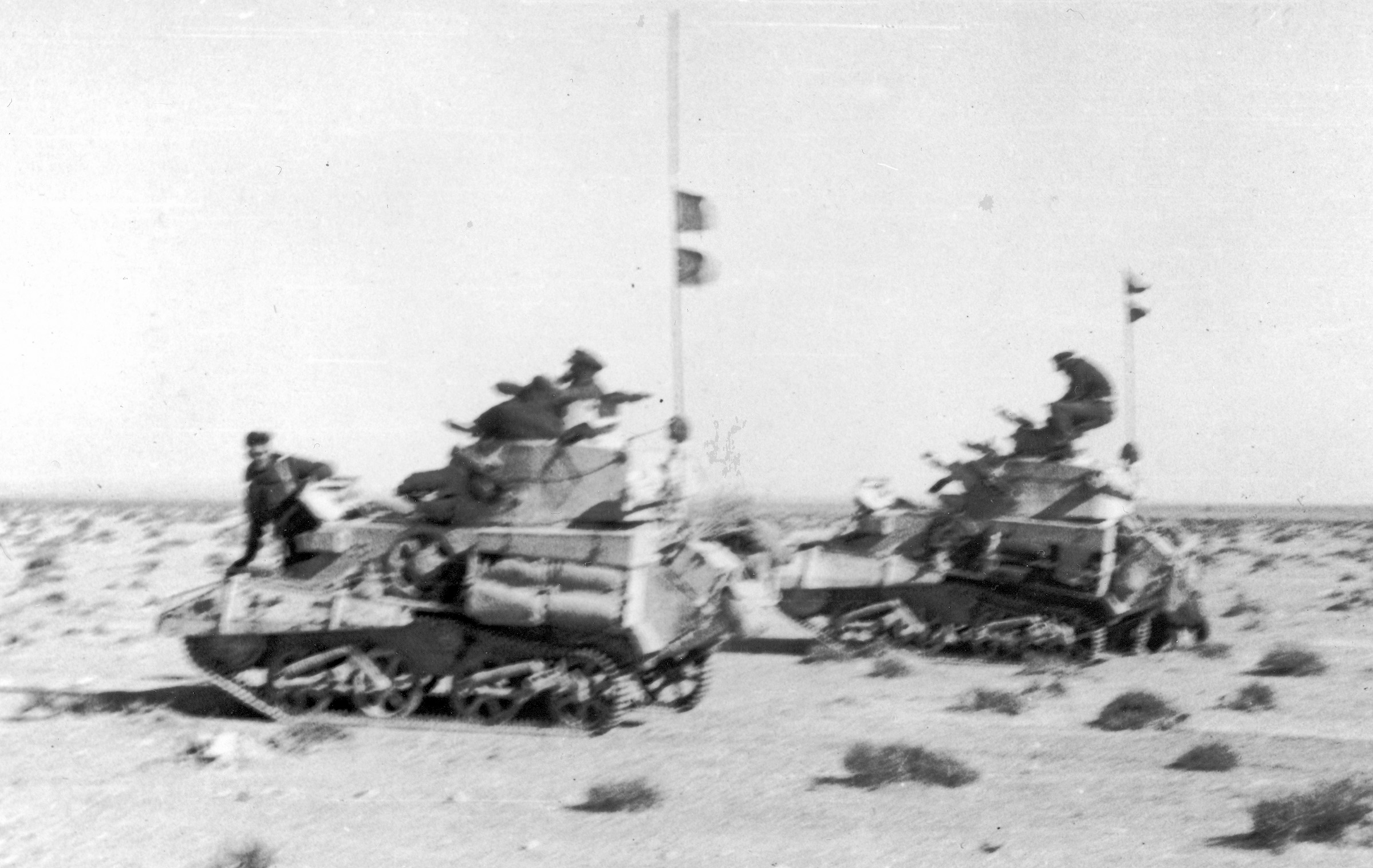
It was impossible to count the horde. Some Italians meandering across the battlefield were “captured” several times. Among the POWs bagged by 19th Brigade were the commanding generals of the 62nd and 63rd Divisions, Tracchia and Guida, respectively. Italian machine gunners fired their weapons until the Australians came within firing range and then surrendered.
While the ground forces advanced, RAF Bristol Blenheim bombers blasted Italian airfields to the west, clearing the skies.
There was nothing left for Bergonzoli but to burn his code books and flee on foot, moving so closely to Australian camps that he could smell food in the cookers. Meanwhile, his men shuffled into captivity, officers clutching swords, while Australians moved into Bardia and ransacked the Italian stores of wine and clean linen. War correspondent Alan Moorehead found the town empty, with burning buildings, half-sunken ships in the harbor, and the whole place deathly quiet.
The British claimed to have captured 44,868 prisoners, while the Italians estimated their dead at 40,000 and that the British had captured 38,000. The 13th Corps captured twice as many guns as were in its inventory, along with 12 M13 tanks, 113 L3 tankettes, and 708 motor vehicles, badly needed to relieve 7th Armoured’s exhausted trucks. Australian casualties were 136 dead and 320 wounded.
Australian troops equipped themselves with captured pistols, watches, compasses, gunsights, and signal equipment. “The behaviour of the troops in the face of quantities of liquor was exemplary,” the Australian provost marshal noted.
The collapse of Bardia left Graziani with only two Italian infantry divisions, 60th Sabratha and 61st Sirte, in Cyrennia, and four more in Tripolitania. Of the 248,000 men Graziani began the campaign with, some 80,000 had been lost.
An upset Mussolini told Ciano on January 12 that the Italians were “a race of sheep,” adding, “In the future we shall select an army of professionals, selecting them out of 12 to 13 million Italians there in the valley of the Po and in part of central Italy. All the others will be put to work making arms for the warrior aristocracy.”
Graziani himself was also depressed. He sent his wife to Ciano with a letter pleading for the Luftwaffe, blamed the whole mess on Badoglio, wrote up a will, and talked of suicide.
But Adolf Hitler was concerned with North Africa, too. On January 11, he ordered German armor to Libya and Luftwaffe Flieger-korps 10 to Sicily. Germany’s Führer did not want to be drawn into a campaign in North Africa, but had to support his Ally.
“The success at Bardia demonstrated that there is no fortress so strong in its engineering that men of determination and cunning, with weapons in their hands, cannot take it,” wrote the Australian official history. With Bardia in hand, Wavell ordered O’Connor to keep on toward Tobruk, seizing this town with its water purification plant and superb natural harbor, and driving the Italians back.
But now Churchill was intervening, demanding that Wavell withdraw three divisions and an armored brigade to Greece. Such a move would halt O’Connor in his tracks. While the leaders bickered, O’Connor rolled on. Mackay warned his Australians to stop wearing captured uniforms, fraternizing with POWs, and firing off captured weapons. “We must keep our heads and maintain perspective and poise. If we do not we shall quickly lose efficiency and slip to the level of the foe we are trying to defeat.” But his troops enjoyed high morale despite difficult conditions. Australian soldiers got half a gallon of water per man per day, cleaned their kitchen gear with sand, and endured endless meals of bully beef without complaining.
Tobruk was a town whose physical assets were scarcely equal to the legendary status it would attain. It consisted of a small harbor, a bunch of white buildings, a hotel, restaurant, and a few shops. It was held by 25,000 men under General Petassi Manella’s 22nd Corps, including General della Mura’s 61st Sirte Division; 45 light and 20 medium tanks; 200 guns; the usual antitank ditches; two forts, Salaro and Palastrino; and strongpoints. There was also the Italian cruiser San Giorgio, which had run aground after being bombed by the RAF but still had working guns. Twice as much ground and half as many men as at Bardia confronted the Australians. But the Italians had no illusions about this defense succeeding.
The Australians advanced, short of water. The 13th Corps was running out of vehicles due to the difficult terrain and sandstorms that flipped over telegraph poles. Trucks were cannibalized. Tanks threw their treads. The Australian divisional cavalry was forced to re-equip with captured Italian M13s, all painted with the Aussies’ leaping kangaroo symbol. Australian troops replaced their boots with captured Italian gear. The advance was slowed by fleas, lice, and Italian booby traps.
O’Connor and Mackay planned to hit Tobruk from the town’s southeast corner, relying on 16th Brigade to punch a hole, the 17th to follow up, and the 19th to exploit. Australian gunners prepared their bombardment thoroughly to make up for the shortage of tanks—there were only 18 to support the attack.
The assault went in at 4 am on January 21, delayed three days by dust storms. At Bardia, the Aussies were weighted down with equipment. At Tobruk they wore only jerkins, and carried only weapons and ammunition.
The Italians fought back, relying on barbed wire and booby traps to augment their machine guns. Sergeant F.J. Hoddinott of Queensland hurled grenades to overcome Post 55. After half an hour, it fell. Post 62 fought off tank and artillery shelling until Lieutenant F.D. Clarke of Adelaide poured a mixture of crude oil and kerosene through the post’s windows and ignited it. Inside, 11 Italians died and 35 surrendered. Italian artillery boomed in defiance, but most Italian guns were battered World War I relics and many shells turned out to be duds.
The expanding Australian drive became a torrent as troops fanned out, losing contact with each other. Officers had to send dispatch riders out through the dust on captured motorcycles. Italian defenses collapsed under accurate artillery fire. Again came heavy surrenders—one company captured 300 men. Another hauled in a thousand POWs, including a general.
By midday, 19th Brigade’s 2/8th Battalion was moving on Fort Pilastrino, the 61st Division’s headquarters. The 2/8th came under fire from dug-in Italian tanks, so the Australians charged with bayonet and grenade, destroying the first tank. The rest surrendered. Next, the 2/8th captured some mobile tanks, then some machine-gun positions. Sergeant M.J. Burgess, a Melbourne mill-packer, jumped on top of an Italian tank and struggled to lift the top so he could toss in his hand grenade. He was hit by several bullets. “His last effort before he died was to struggle to put the pin back and throw the grenade clear of his comrades,” a diarist noted.
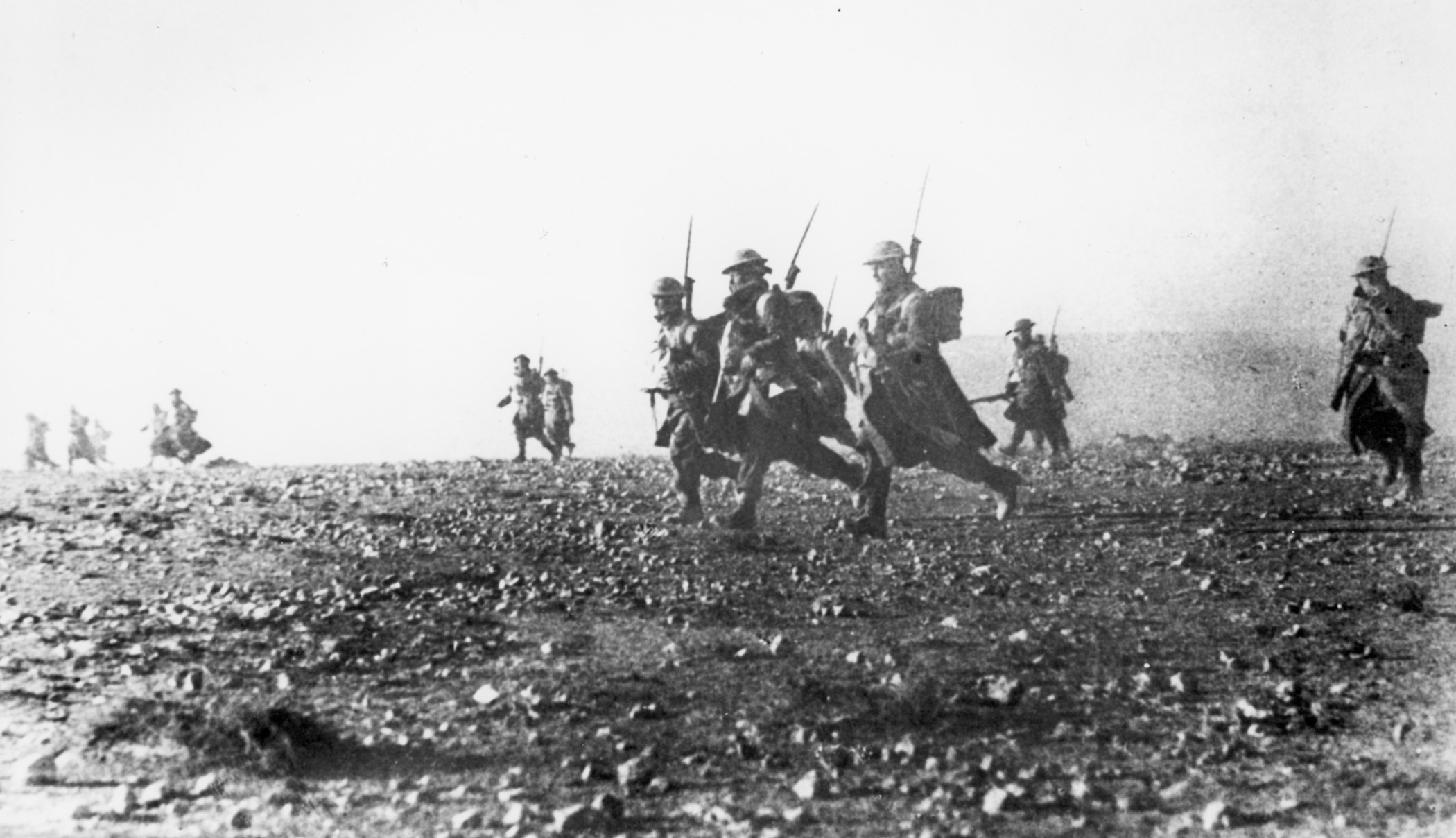
The Italians counterattacked with nine tanks and hundreds of infantrymen. Private O.Z. Neall, a Lake Mundi grazier, knocked out three Italian tanks with his Boyes antitank rifle, a feat that astounded everyone. The Boyes rifle was noted for its uselessness. But the Italians continued to advance until two British Matildas rumbled up. Seeing the massive tanks, the Italians fled, Australian infantrymen charging after them. Fort Pilastrino turned out to be a collection of barracks buildings surrounded by a wall, and Australian infantry took it quickly.
The 2/4th and 2/11th Battalions were also attacking, supported by British and Australian artillery. Their first objective was Fort Solaro, which housed the Tobruk garrison’s headquarters. After a battle with Italian tanks on Tobruk’s airfield, the Australians found Solaro, which was just a few army buildings, not worthy of the title “Fort.” Captain H.S. Conkey saw some Italians driving away in trucks, and he and his pals hopped on Italian motorcycles to capture the enemy. He scooped up 600 prisoners, but not Tobruk’s top defenders … they had already fled.
The Australians continued to fight their way through sangars and wadis with Tommy guns and stumbled into a tunnel system, which was obviously an enemy headquarters. Soon enough an Italian officer, Manella himself, came out, telling Lieutenant J.S. Copland of the 2/4th Battalion he would surrender only to an officer.
“I’m an officer,” Copland said, and a tearful Manella, looking dignified, quiet, and tired, handed over his pistol to Copland. Along with Manella, Copland bagged his chief of staff and 1,600 prisoners.
Manella was driven to 19th Brigade HQ and asked to surrender all of Tobruk. Manella told his captors his troops had orders from Mussolini to fight to the finish. The 2/3rd Battalion relied on heavy fire to make up for its lack of strength (a dozen men in one platoon) and to intimidate the Italians. Soon Captain J.N. Abbot’s company saw hundreds of Italian soldiers approaching, waving white rags.
By the end of the 21st, most Italian guns were silent. Tobruk harbor was covered with black smoke, as the enemy was destroying ammunition and fuel. Some 8,000 Italian prisoners were trying to keep warm behind Australian lines by lighting fires. During the night, Italian SM 79s flew in to bomb the Australians, saw the fires lit by the prisoners, and bombed them. Italian bombs killed hundreds of their own men.
Next day, Mackay ordered the coup de grâce. The Australians advanced on a wide front. General della Mura of the 61st Division was bagged early and refused to surrender his force to the junior officer who caught him. No matter, thousands of della Mura’s men were shuffling in to give up anyway. At 9:30, Captain J.R. Savige took the surrender of a local commander, who was persuaded to phone other Italian positions and order them to give up, too.
Lieutenant Colonel K.W. Eather rode a Bren gun carrier over the edge of a depression, saw a line of white flags, and found 3,000 Italians drawn up in parade formation with the officers in front, holding their luggage. The officers were shaven and wore well-tended uniforms and polished boots. Eather took the officers’ pistols. The other ranks had already taken away their Mannlicher-Carcano rifles and sent them to the rear.
Now the Australians were at the last escarpment before town. Lieutenant E.C. Hennessy of divisional cavalry rolled into Tobruk in a Bren gun carrier. He hit a barrier consisting of an iron girder supported by sandbags. Sergeant G.M. Mills hopped out with his crew to remove it and two Italians ran out to help. Then Hennessy and his team drove into the port.
As they clattered down a street a neat Italian officer came forward to lead Hennessy to naval headquarters, where Admiral Massmiliano Vietina was waiting to surrender. Hennessy sat the officer on the front of his carrier as “a guarantee of good faith” and they rattled through town to a large building. There stood Vietina in shining dress whites, ready to offer his sword.
Hennessy declined it and sent a carrier back to fetch Brigadier Robertson, who came quickly, along with a brace of Australian and British war correspondents. The exhausted Australian officers staggered up, past dead bodies and wounded men. They were in no mood to trifle. “You have land mines laid in and around the town,” Robertson told Vietina. “I will take reprisals for the life of every one of my men lost on those mines.” Vietina assured Robertson that the Italians were “springing” their mines and booby traps to prevent further destruction.
The Italians also handed over their storage and ammo dumps. In the port, the passenger ship Marco Polo lay sunk. Buildings in town were afire and wrecked, with furniture strewn in the streets. Alan Moorehead found a soldier frying eggs on the mahogany counter of the National Bank.
After the ceremony, Robertson and his men fired off Very flares to signify that Tobruk had fallen. An Australian soldier lowered the green-and-red flag of Italy and replaced it with a Digger’s hat.
Hordes of defeated Italians trooped up from bunkers and shelters to surrender, while Australian troops fanned out to take control. About 25,000 more prisoners were taken, along with 208 guns, 23 tanks, 200 vehicles, the water distilleries, the port, and enough canned food to keep the Italians going for two months. Australian casualties were 49 killed and 306 wounded.
The 16th Brigade soon found that victory was melancholy, as they had the near-impossible task of caring for thousands of POWs amid dust storms. The Australians themselves were short on water and supplies. It took 2/7th Battalion seven hours to feed all its captives. The 2/2nd Battalion kept its POWs occupied by having them sing. Only five of the 12 Italian divisions in Cyrennia were left, and nearly half of these 250,000 men dead or captured.
O’Connor’s new target was Derna, where “Electric Whiskers” was reorganizing his 21st Corps. This force consisted of 60th Sabratha Division, 17th Pavia Division, and 27th Brescia Division reinforced by Group Babini, a 70-tank armored brigade.
While the Australians sortied out of Tobruk, 7th Armoured was on the move. Wavell approved the advance to continue to Mechili and Derna, 11th Hussars leading the way. They ran into 50 M13s on the track and in the battle destroyed nine for the loss of seven British. One company of British engineers removed more than 15,000 mines. Clearly the Italians were not done yet.
But Graziani was in despair. He frantically wired Rome that he faced 17 British divisions. “I had a vision of the future,” he wrote. “I saw that it was not possible to avert the fatality of the future!”
The two British divisions Graziani actually faced rumbled on through abandoned Italian colonial homesteads, which were being torn up by looting Arabs. O’Connor planned to grab the Mechili crossroads by coup de main. Errors ensued. First, 4th Armoured Brigade got lost. O’Connor’s men had literally driven off the edge of their maps, while Babini Brigade’s 120 tanks did not attack, missing a chance to chew up the 4th.
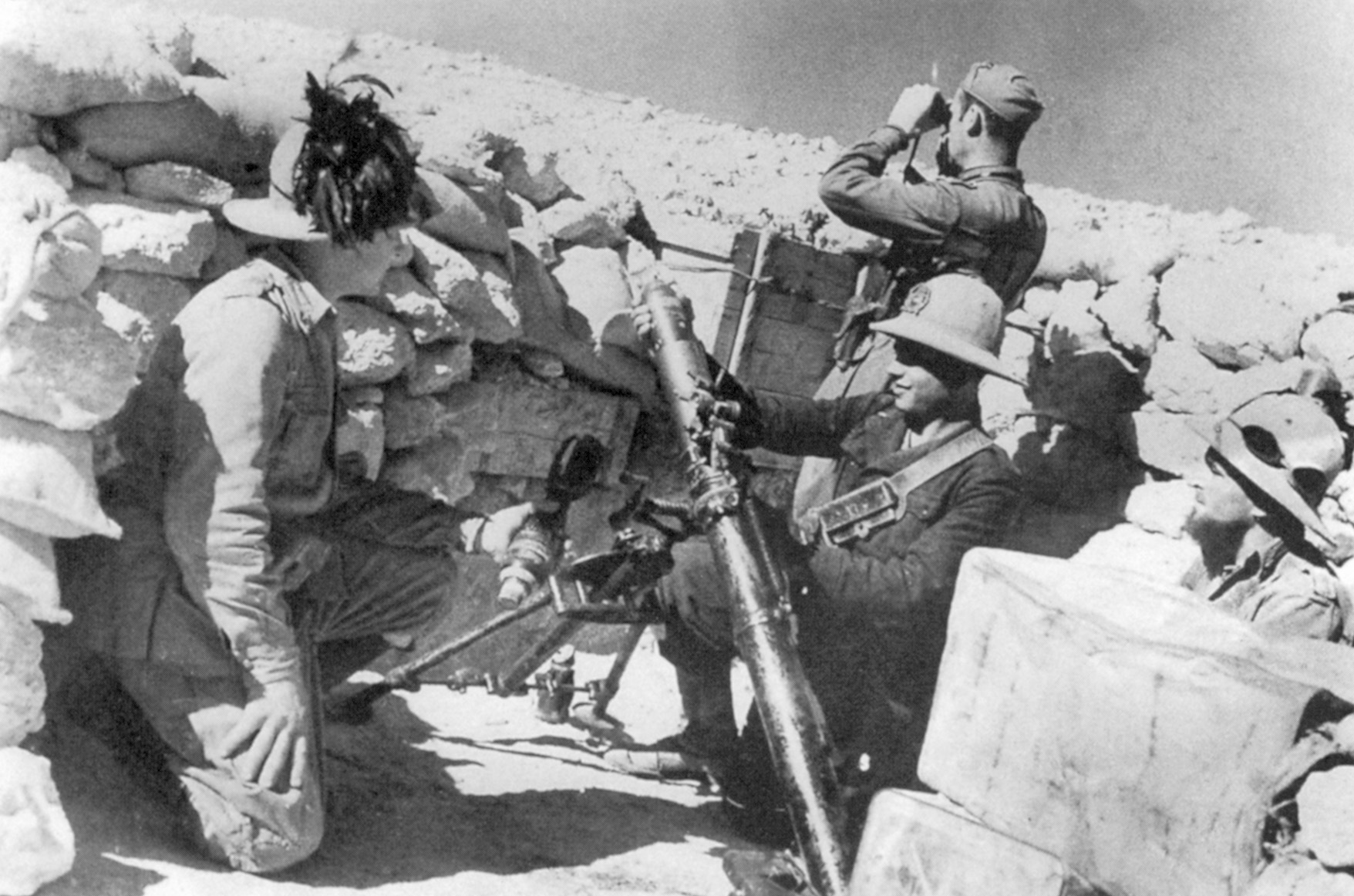
O’Connor, battling a stomach ailment, rewrote his plan. The 6th Australian would hit Derna on the coast and Bergonzoli, while 7th Armoured would put Babini Brigade at Mechili in a neat pincer, cutting the Italian armor inland from the coastal infantry.
As usual, the Italians reacted slowly, hampered by a Byzantine chain of command and a lack of radios. But Babini fought hard on the 23rd at Mechili, ripping up the 11th Hussars’ light tanks and knocking the 2nd Royal Tank Regiment (RTR) off balance. In a desert tank battle that looked like battleships maneuvering on the high seas, 2nd RTR counterattacked, caught the Italians skylined on a ridge, and picked them all off.
Even so, Graziani was pleased. His men were fighting back. He ordered 10th Army’s commander, Tellera, to order Bergonzoli to in turn order Babini to attack the British flank. Tellera wavered, reporting that Babini had seen 150 British tanks (he was wrong). Graziani lost his nerve and ordered his armor to withdraw. “If I had an armored unit, I could maneuver around enemy lines,” he wired Mussolini. Graziani had such a unit. He just did not use it. “I am more or less in the position of a captain in command of his ship which is on the point of sinking, because errors are present on all sides,” he whined.
Meanwhile, the Australians hammered Derna. The 19th Brigade slugged it out with enemy artillery and machine guns for control of Derna’s airstrip at Siret el Chreiba. The Aussies took on an “uncommonly determined” Italian rear guard. Little progress was made. At one point, the Australians found themselves 300 yards from four Italian tanks, whose crews were cooking breakfast. The Australians whispered into their field telephone for antitank fire, and the Italians were killed before they ate their meal. The battle for the airfield took four days of artillery bombardment and bayonet charges, as the tough 10th Bersaglieri Regiment, in its plumed pith helmets, fought hard.
The 7th was stalled, too, mostly because its vehicles and men were exhausted from six weeks’ campaigning and a stretched supply line. O’Connor doubted he would take Ben- ghazi before German reinforcements arrived.
Bergonzoli’s defense of Derna was determined and efficient. Italian prepositioned supplies were plentiful, while the 6th Australian’s guns were down to 10 rounds a day. But the British pressure was too much. Bergonzoli asked for more tanks.
Graziani received this with another signal from Mussolini on the 27th: “I want you to know, dear Marshal, that we are eating out our liver, night and day, to send you the necessaries for this arduous battle.” The message promised more aircraft, the Ariete Armored Division, and more delays.
Graziani ordered his field commanders to “disengage speedily” from Derna. After a burst of gunfire, the Italians set their ammo dumps ablaze and retreated. Next morning, local Arabs told the baffled Aussies that the Italians were gone. The 6th Australian charged into an empty town of modern boxlike houses on the coast, with gardens full of flowers and fresh vegetables, the first the Australians had seen in a month. Local Arabs were busy loading looted food, tables, chairs, and sewing machines on their donkeys. The town had been picked clean by retreating Italians and Arabs. When Mackay himself drove into town, he found the few roads clogged with supply vehicles. The general spent the 31st playing traffic cop at an intersection.
Alan Moorehead took over a superb and empty villa with an intact wine cellar and a bathroom, and took his first shower in weeks. After scrubbing off, he strode into the living room to find a telephone bearing the owner’s name: “His Excellency Marshal Graziani.”
Bergonzoli had fled again, and the British could not pursue to Benghazi. The 6th Australian lacked transport and nearly all the 7th’s tanks had thrown their treads. More importantly, 6th found itself responsible for protecting nearly 90,000 Italian civilians who had been brought to Libya to colonize the miserable place.
Still, the Aussies kept moving. One battalion marched 70 miles in three days, slowed mostly by booby traps. Graziani, whose Cyrene bunker was now under RAF attack, fled to Tripoli, leaving Tellera and Bergonzoli in command. The Australians rolled into the Italian colonies at Giovanni Berta to find white flags waving in the windows of square, white houses. The women gave the Australians bread, vegetables, and bottles of homemade wine, while Arabs broke in through the backs to loot the houses.
At Cyrene on February 2, the Australians found the ancient Roman city intact, and the Italians retreating. Maintaining the pace of the advance was a problem for the Australians, so they grounded 16th Brigade at Tobruk, grabbed its vehicles, commandeered anything Italian that could move, and kept 19th Brigade’s three battalions moving forward. The Australian 6th Divisional Cavalry rattled into Luigi Razza on February 4 and found 300 Italians of the 86th Regiment ready to surrender, and the mayor and priest begging for protection from the Arabs. Nine cavalrymen spent the night in the village, paying for dinner at the café with lire found at Tobruk. The Australians armed settlers with captured Italian swords, and the settlers patrolled the town.
O’Connor, racked by fatigue and stomach trouble, was facing the certainty of his offensive stalling out in front of Benghazi. From code-breaking of Italian radio intercepts in Cairo, O’Connor knew the Italians were retreating from Benghazi. If they escaped, they could regroup and counterattack his force.
O’Connor set up headquarters at an Italian airfield at Bomba. Amid wrecked Italian planes and bitter cold, O’Connor and his staff enjoyed captured parmesan cheese and chianti, while the general cast around for another scent. Only 50 cruiser tanks could still move. The 7th was at the end of its supply chain.
O’Connor’s solution was breathtaking in its genius. His Australian infantry would continue to drive steadily on Benghazi. Meanwhile, the overworked and exhausted 7th Armoured would cut across the desert tracks south of Benghazi to a hamlet called Beda Fomm and cut off the retreating Italian 10th Army in a classic ambush. If the move worked, the 10th would collapse. If it failed, 7th would have only three days of supplies to hold out in the desert. After that, it would be doomed.
It was the kind of move that Hollywood would later attribute to American generals, and not consider possible by British officers and troops—risky and dangerous, but with great potential if it worked.
O’Connor had sent his chief of staff, Brigadier Eric Dorman-Smith, back to Cairo with the plan on January 31. Wavell heard Dorman-Smith’s report and said, “Tell Dick he can go on, and wish him luck from me. He has done well.”
Wavell backed his words with a supply convoy whose vehicles were sent to Mechili to resupply 7th Armoured’s panniers. It was just possible for the division to move out on February 4 with full vehicles. The division would move on the 5th, with barely 45 heavy tanks, 80 light tanks, two days’ supply of food and water, and two refills of ammunition—hardly enough against Tellera’s four divisions. O’Connor gave Creagh his orders on February 3, as the latter was heading back to Cairo for some desperately needed rest. Creagh drove straight back to his Tac HQ to brief his subordinates.
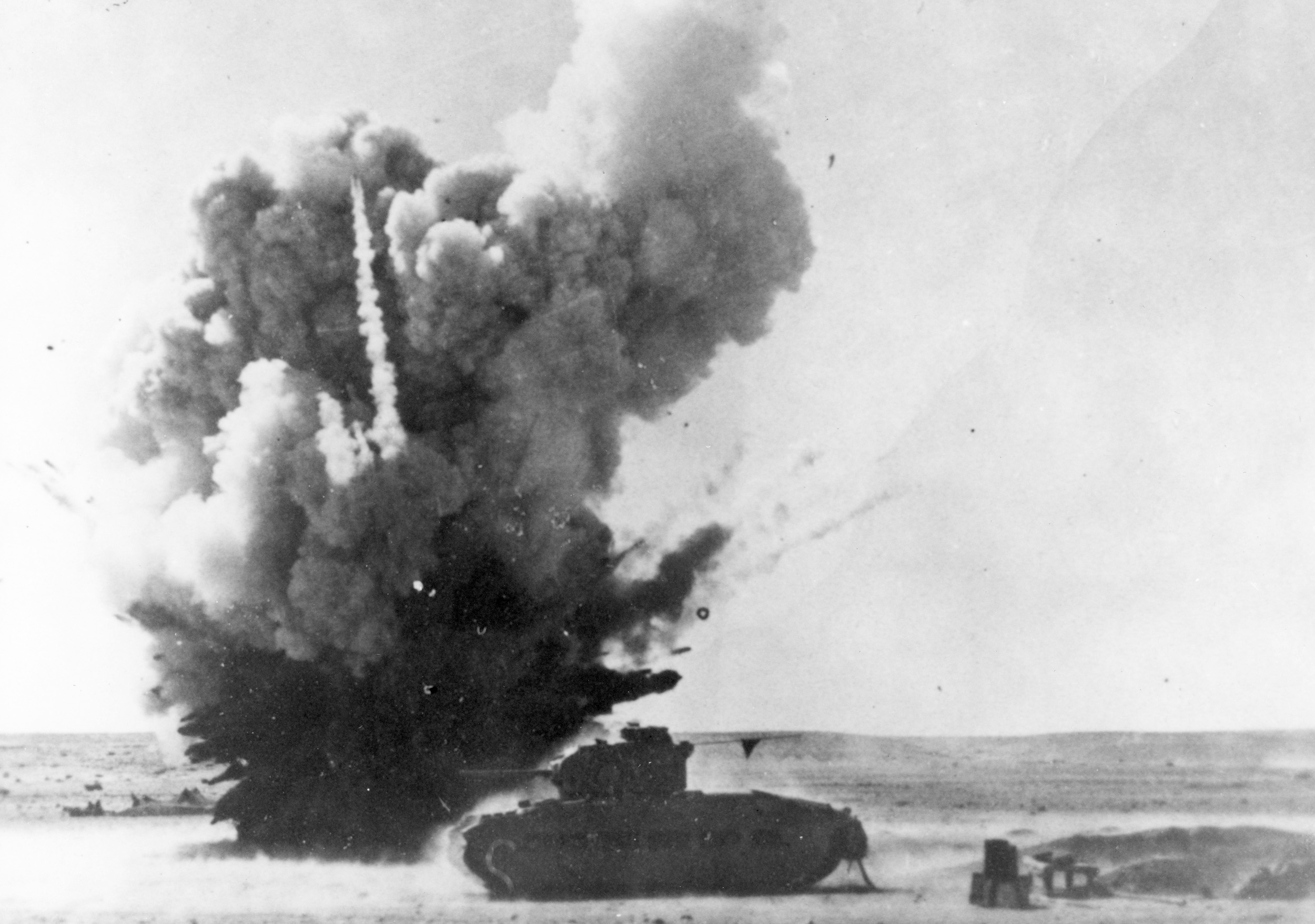
“It is likely that tonight the enemy mechanical columns will move on Msus Sceleidima, marching even with lights on,” Tellera’s radio-intercept teams noted. The Italians were right, but Tellera could do little to block the British advance.
In any case, the Italians were not worried. “They can’t do it,” one Italian officer said. “And even if they do it we still have two days to spare.” The Italians confined countermeasures to light aerial mine laying and alerting their detachments in the area.
The British were not sure the move was possible either. But at dawn on February 4, 50 cruisers and 80 light tanks of 7th Armoured rolled out of Mechili to the west. Creagh wrote, “Off we went across the unknown country in full cry. It was definitely exciting and the Division pushing on and on across the desert was a stimulating sight. Some of this desert was very rough and slowed us up; so I sent a wheeled column ahead which was faster than the tracked tanks. This column was to get on to the Coast Road and hold up any retreating forces until the main body of the Division could go into action.”
Creagh organized an ad hoc team under Lt. Col. John Combe, called it Combe Force, and sent it on ahead. This force consisted entirely of 11th Hussars, 2nd Rifle Brigade, C Battery of the 4th Royal Horse Artillery (RHA), and 106th Battery RHA with its truck-mounted 37mm antitank guns. All vehicles were wheeled. Combe Force had 2,000 men and no tanks. They would pin down the Italians until the rest of the division arrived.
Combe looked at his maps and chose to move via Antelat across the tracks and cut the Italian retreat off at Beda Fomm, which consisted of a few huts and a mosque.
British war correspondent Alexander Clifford wrote, “For mile after mile they juddered over great slabs of sharp, uneven rock. Then they crossed belts of soft, fine sand, which engulfed vehicles up to their axles. Sandstorms blew up, and the trucks had to keep almost touching if they were not to lose one another. Whole convoys lurched off into the gloom and only re-established contact hours later. It was freezing cold, and the latter half of the division had to contend with fierce, icy showers. All kit had been cut to the bone, and there were no extra blankets or greatcoats, and scarcely more than a glass of water per man per day.”
A tank commander in 1st RTR wrote, “The march was a complete nightmare and I remember little about it because most of the time I was too tired and bruised by my bucking tank. It was bitterly cold, and, for much of the way, it was either raining or blowing a sandstorm … by day the squadron was deployed on a very wide front with the task of finding the easiest passage through the rough and rocky countryside. If a tank broke down, and many did, the crew reported its position and they stayed with it until the divisional recovery teams towed it back to Tobruk.”
One light tank crew lost in this way spent three weeks without recovery, eking out three days rations until their word “HELP,” etched in the sand, caught the eye of a passing RAF aircraft.
British vehicles struggled through mud and sand, sometimes only able to do six miles an hour. O’Connor’s own car broke down. Sand and mud caked the British soldiers.
With the indefatigable 11th Hussars leading, Msus was reached and cleared of a small Italian detachment on February 4. While the British advanced, word came down that the Italians were retreating into Tripolitania.
Driving west in a truck to Benghazi, war correspondents Alan Moorehead and Alexander Clifford came under Italian fire. Machine-gun fire stitched up Clifford and wrecked the truck. A doctor operated on Clifford successfully under a hurricane lamp. The two reporters slept fitfully on stretchers, and hiked back to their truck the next day. Everything was shredded, including their clothing. Moorehead only had his greatcoat and an Italian sailor’s uniform he’d picked up in Tobruk.
Late in the day, O’Connor and his chief of staff, Dorman-Smith, hopped in their staff car and followed the armor. The staff car struggled across the vile ground. The 4-wheel-drive jeep was another military marvel yet to come. O’Connor saw broken-down British tanks and said to Dorman-Smith, “My God, do you think it’s going to be all right?”
Just before dawn on the 5th, Combe Force took off on its assignment. The wheeled vehicles jolted across the terrain, armored cars leading, artillery behind, across uncharted ground and relying on compass bearings to stay on track. RAF reconnaissance Blenheims reported the Italians were driving down the Coast Road at top speed into the trap. At noon the 11th Hussars reached the coast to find no Italian vehicles. That meant the Italians had yet to arrive.
Relieved, Combe settled his infantry into a system of shallow ridges through which passed the road from north to south. The Bren gun carriers were left behind, out of gas. Behind the infantry the artillery and armored cars dug in.
At 2:30 pm, sharp-eyed British soldiers saw a cloud of dust heading toward them. It was the retreating Italian 10th Army. Combe and O’Connor had won the race … by two hours. But the enemy outnumbered the British by five to one in tanks and guns.
The lead Italians were weary men of the 10th Bersaglieri, escorting a motley collection of air-force ground crews, colonial administrators, gunners without guns, and frightened civilians. As they made the turn in the road, the vehicles came under machine-gun fire and hit land mines.
The 10th Bersaglieri stopped its retreat to take on the 1st King’s Royal Rifle Corps but came under 25-pounder artillery fire. The Italians, realizing their route was blocked, attacked with ferocity but made no headway against British fire discipline. Combe reported his encounter by radio to Creagh, who in turn ordered Caunter’s 4th Brigade to hit the Italians from the flank. When O’Connor’s staff car came up to Creagh’s Tac HQ that evening, the stiff and exhausted O’Connor got the good news and applauded Creagh’s vigor. The generals discussed their next moves while Free French Marines poured rifle fire into delayed-action bombs the Italian air force had dropped in an effort to block the trails.
At dawn on the 5th, the 4th Armoured Brigade moved toward Beda Fomm behind Combe Force, clearing the 40-mile journey by 4 pm. The brigade’s 50 A-13 cruiser tanks and 95 light tanks reached the scene north of the British ambush line to find an endless queue of Italian vehicles strung along the Coast Road, waiting to retreat. The 4th Armoured was down to its last drops of fuel, but it charged into the Italians with gusto.
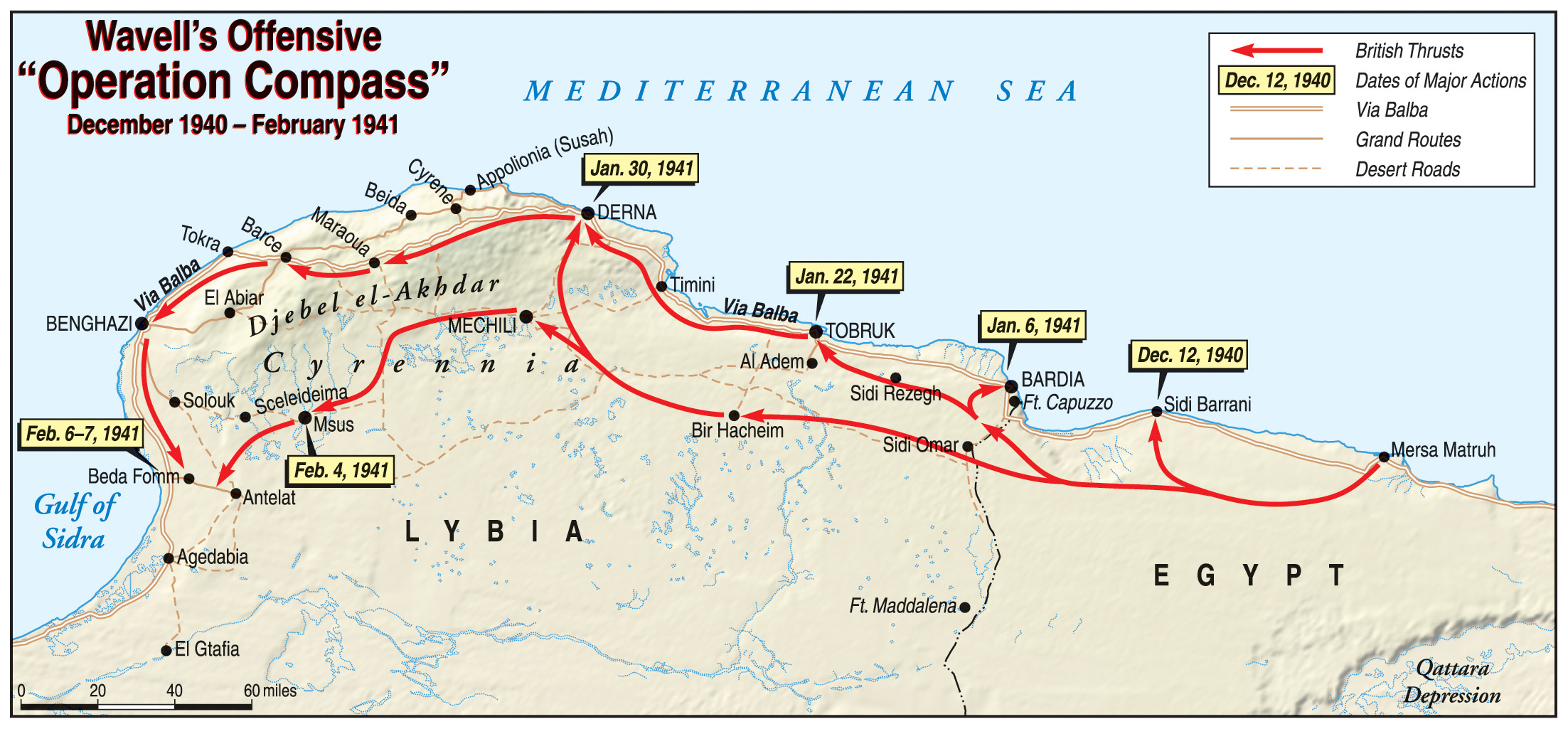
The Italians themselves were shocked and unable to respond, as the columns were mostly poorly armed support troops. Panicked Italian drivers turned their vehicles into sand dunes and became bogged down. Those that did not flee received 40mm ordnance, which set fuel trucks alight, providing illumination for Combe’s artillery, which added 25-pounder shells to the din.
British infantry dismounted to take more than 800 prisoners and salvage captured vehicles. Some were fuel trucks, and British tank crewmen refueled their empty vehicles on the spot. The battle took on bizarre tones. One Hussar sergeant kept his prisoners in check with his Very pistol until he was politely handed a Breda automatic by an Italian who spoke English with an American accent. The Italian had spent 11 years in the United States.
The British fanned across the area. One squadron shot its way along the 10 miles of fighting, replenished its shells and fuel, and then fought all the way back. When Italian tanks tried to counterattack, Royal Engineers moved forward, laid a mine field in front of the enemy, and halted the attack.
The 2nd RTR rolled north and dismembered a flak battery, sweeping up guns, men, and vehicles by the light of burning trucks. The Italians were in a shambles.
Problem was, so were the British. They were down to their last fuel. Tankers were siphoning fuel from their gunner vehicles. Creagh ordered his division to dig in for the night, refuel, and move 5,000 prisoners out.
While the British ate gummy bully beef, two Italian tanks came rumbling up. A 2nd RTR trooper knocked in turn on the Italian hatch tops, and at pistol point persuaded the Italians to surrender.
During the night, the British supply vehicles arrived, and 7th Armoured refilled its panniers. The situation was serious for both sides. The Italians were cut off, and the British were practically out of supplies.
Meanwhile, the Australians pushed on to Benghazi. The 2/8th Battalion looked out from the base of the escarpment to find farms, straight roads, and square houses surrounding the town of Barce. They also found blown bridges that would take days to repair. The Australians moved on foot into the town to find a full ammo dump. The mayor and Australian officers inspected it and left. A few minutes later, the delayed-action bombs left behind cooked off, creating an awesome explosion and pall of smoke.
February 6 dawned raining and windy, with both sides exhausted, unable to rest during the night. Tellera and Bergonzoli were determined to break through to safety. To the east of Benghazi, the Australians advanced. Barce’s Italian ammunition dump went up in a dramatic ball of smoke and flame, and Babini Group faced the whole 6th Australian Division. At Sceleideima, Italian troops fought hard against advancing Australians.
Tasked with the breakout at Beda Fomm, Bergonzoli knew his 21st Corps was on its own. Lacking reconnaissance and adequate information, he voted for a short hook east through the desert to outflank the British defenders, relying on superior numbers.
The Italians moved out at 8:30 am, without artillery, targeting a small rise in the road just west of the mosque, logically called the Pimple.
Meanwhile the British, under Caunter, prepared for the attack. The 4th Armoured Brigade was nearly at the end of its tanks, and the division’s reserve was only 10 cruiser tanks. Caunter had plenty of worries: cold, wind, rain, sandstorms, and the fact that he was far beyond the range of RAF support.
At dawn, patrols told Caunter the Italian column, stretching for miles, was moving south. Caunter’s men stood to. The 2nd RTR, with 19 cruiser and seven light tanks at the edge of a slope, faced 60 Italian machines at the Pimple.
As the Italians attacked, the British got in the all-important first shot, their guns ripping through the Italian armor, turning M13s into burning coffins, wrecking eight. Before the stunned Italians could return fire the British had withdrawn down the slope, then repeated the example, destroying seven more tanks with no losses. The Italians opened up with artillery and committed their reserves, as did the British.
“Practically all morning we never stopped firing at wagon loads of infantry or at tanks,” wrote Sergeant Topper Brown of 2nd RTR. “We definitely had a score of 20 M13s at the end of the day. At times we were getting overwhelmed and had to keep withdrawing to the Pimple. Italian artillery knocked out four 2RTR cruisers who were out of ammo. At 1300 hours, the RASC brought up their ammo lorries and the remaining 10 cruisers were topped up with fuel and ammo.”
The Italian numerical advantage was no help. Most Italian vehicles had no radios. The British instituted a drill movement right out of Salisbury Plain training exercises. With the snap order, “Hello all stations. Tanks left and attack the Pimple,” the British counterattacked.
The Italians, lacking the efficiency of radio, stolidly moved to their predetermined objectives and waited for orders. The Italians fought with great determination but in total disarray. A Squadron of the 2nd RTR soon scooped up 250 prisoners. British artillery expended nearly all its ammunition to break up attacking Italian infantry columns. At 10 am, the Italian defenders at Sceleideima were told to pull out and reach the Pimple. They raced down the road and into the 7th Hussars.
Even so, the British were still in trouble. The Italians were coming down in an endless stream. Sixty tanks had been knocked out, but more were coming … and 2nd RTR was out of ammunition and the 4th Brigade needed more help. Where was 1st RTR?
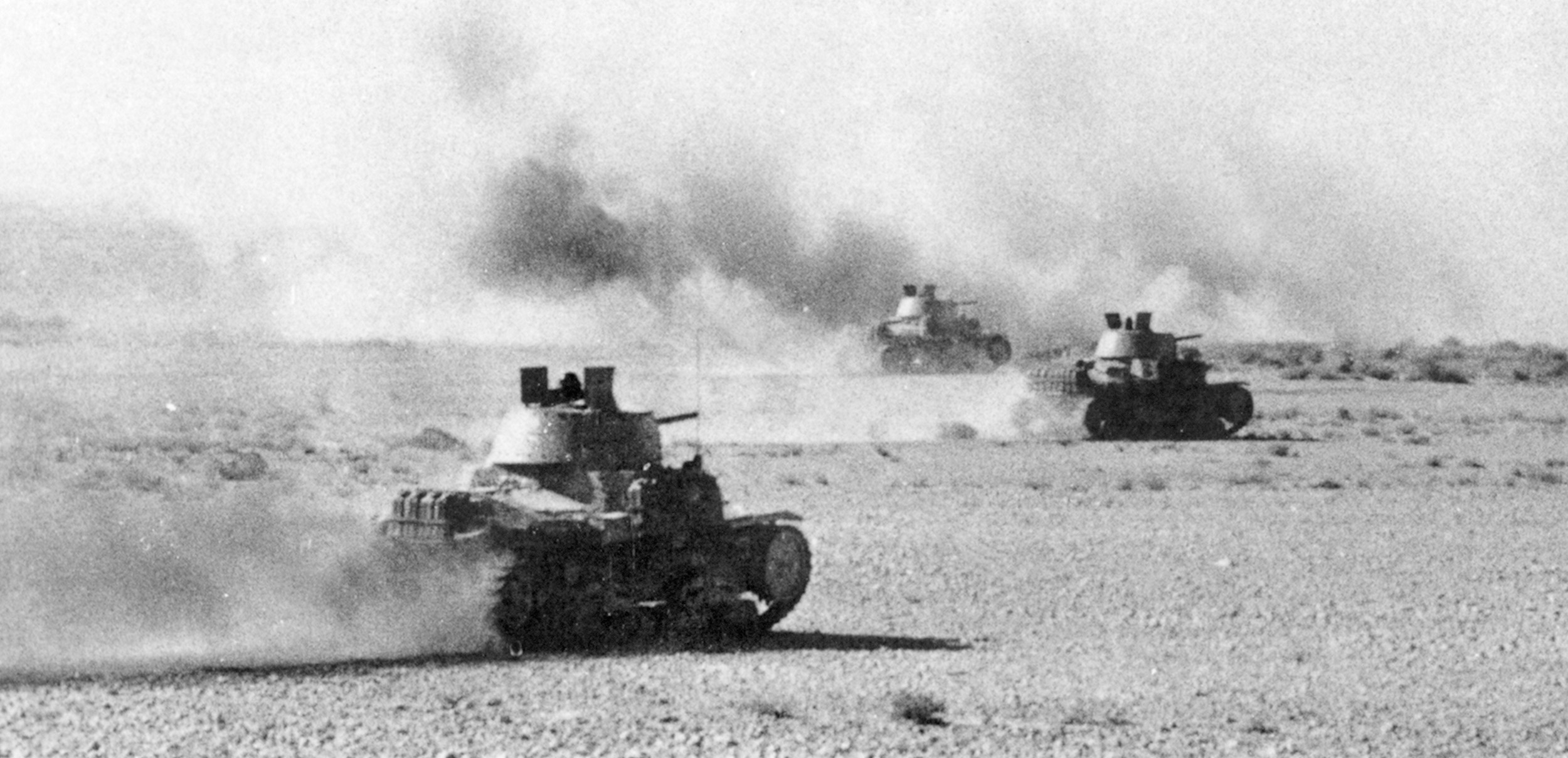
At 11:25, 2nd RTR was down to 13 cruiser tanks. By noon it only had 10. The 7th Hussars were in worse shape. They had only one cruiser tank left. The Italians, sensing victory, kept charging, firing artillery over open sights at point-blank range.
The crisis came at 3 the afternoon. The 7th Hussars found the tail of the Italian column and attacked it. The 3rd Hussars battled Italian tanks. The 2nd RTR, driven off the Pimple, tried to break around. British radio communications were failing. At this point, it seemed the British might crack.
At the critical moment, the 1st RTR finally arrived and rumbled toward the sound of the guns, driving the Italian tanks northwest. Bergonzoli was halted. The 2nd RTR had destroyed 51 M13s for a loss of three tanks and seven men. Other outfits destroyed 33 tanks. A total of 10,000 Italians had surrendered.
Poring over his maps, Bergonzoli decided to try a night attack on the sand dunes west of the Coast Road. No luck. British artillery closed that route.
Both sides, exhausted, flopped down in the gathering desert dusk. That night, O’Connor slept in his car.
To the north, the Australians enjoyed yet another success as the 6th Division eventually entered Benghazi around dusk. Lieutenant W.M. Knox of 2/8th Battalion drove into town to find the population of 50,000 Greeks, Jews, Italians, and Arabs waving and cheering the Australian column. Knox drove to town hall where the Italian civic rulers awaited him. Knox handed the Italians orders that charged them with maintaining law and order until the rest of the division could arrive. The mayor delivered a speech of welcome, calling the Australians “our brave allies,” which baffled the Diggers.
Correspondents Moorehead and Clifford drove onto Benina airfield near the town to find scores of wrecked Italian aircraft and hangars. While they rested in the officers’ quarters with Robertson, the mayor, a Roman Catholic bishop, and top police officers turned up to surrender the city.
Next morning, at Beda Fomm, Bergonzoli mustered his last 30 tanks for one final dawn assault. With the 6th Australian breathing down his neck, Bergonzoli was out of time, space, and ideas.
The attack was based on the courage of desperation, and it hit the 106th RHA’s mounted 37mm guns. The Italians pressed through, having knocked out all but one of the antitank guns. That gun was manned by the battery commander, his batman, and a cook. They destroyed the last Italian tank.
British infantry battered the attacking Italian riflemen, leaving the M13s 20 yards from their objective but completely unsupported. Tellera himself led a bayonet charge and was mortally wounded. The 10th Army was defeated.
“Gradually I became aware of a startling change,” wrote Lieutenant Cyril Joly of 2nd RTR. “First one, then another white flag appeared in the host of vehicles. More and more became visible until the whole enemy column was a forest of waving white banners.” It was 9 am. The Italians had surrendered. Lieutenant Colonel Horace Binks saw “an extraordinary sight, a two-mile area of knocked-out tanks, abandoned tanks, ditched tanks, burned- out vehicles, and dead or dying Italians, many roving about trying to surrender.” The 7th had suffered just 24 casualties.
After breakfasting on a cold sausage, O’Connor got word of the Italian surrender. He turned to Dorman-Smith and said, “We’d better send a message to Archie [Wavell]. What shall we say?”
Dorman-Smith suggested a hunting metaphor, which was fired off in the clear to irritate Mussolini, “Fox killed in the open.”
O’Connor then drove to the sea to find out what had happened. His car zig-zagged through herds of antelope. Dorman-Smith found his boss quiet and almost gloomy. Dorman-Smith congratulated O’Connor on the victory; O’Connor sat silently for a moment, then said, “I would never consider a commander completely successful until he had restored the situation after a serious defeat and a long retreat.”
Now O’Connor reached the wreckage of the Italian 10th Army, which stretched for 15 miles. He surveyed a scene clogged with more than 25,000 prisoners, a hundred tanks (some of which were serviceable), 216 guns, and 1,500 wheeled vehicles. Blasted artillery pieces, wrecked trucks, and shot-up tanks lay amid abandoned ammo cases, and the plains were strewn with abandoned small arms. Torn office paper, the Italian Army’s records, covered everything. Under the blue African sky, small gazelles bounded through the scrub.
“I have seldom seen such a scene of wreckage and confusion as existed on the main Ben-
ghazi road,” wrote O’Connor. “Broken up and overturned lorries; in some places guns, lorries and tanks in hopeless confusion. Elsewhere guns in action and broken down M13s. All over the countryside and everywhere masses of prisoners. Most of the enemy tanks had dead men inside them … Gen. Tellera, the Army Commander, was in one lying seriously wounded. He died later in the day.” Tellera was given a military funeral with full honors at Benghazi. Cona took over.
Creagh was stunned to find “a bus-load of Italian ladies sitting in the middle of a battlefield powdering their noses and brewing some tea.”
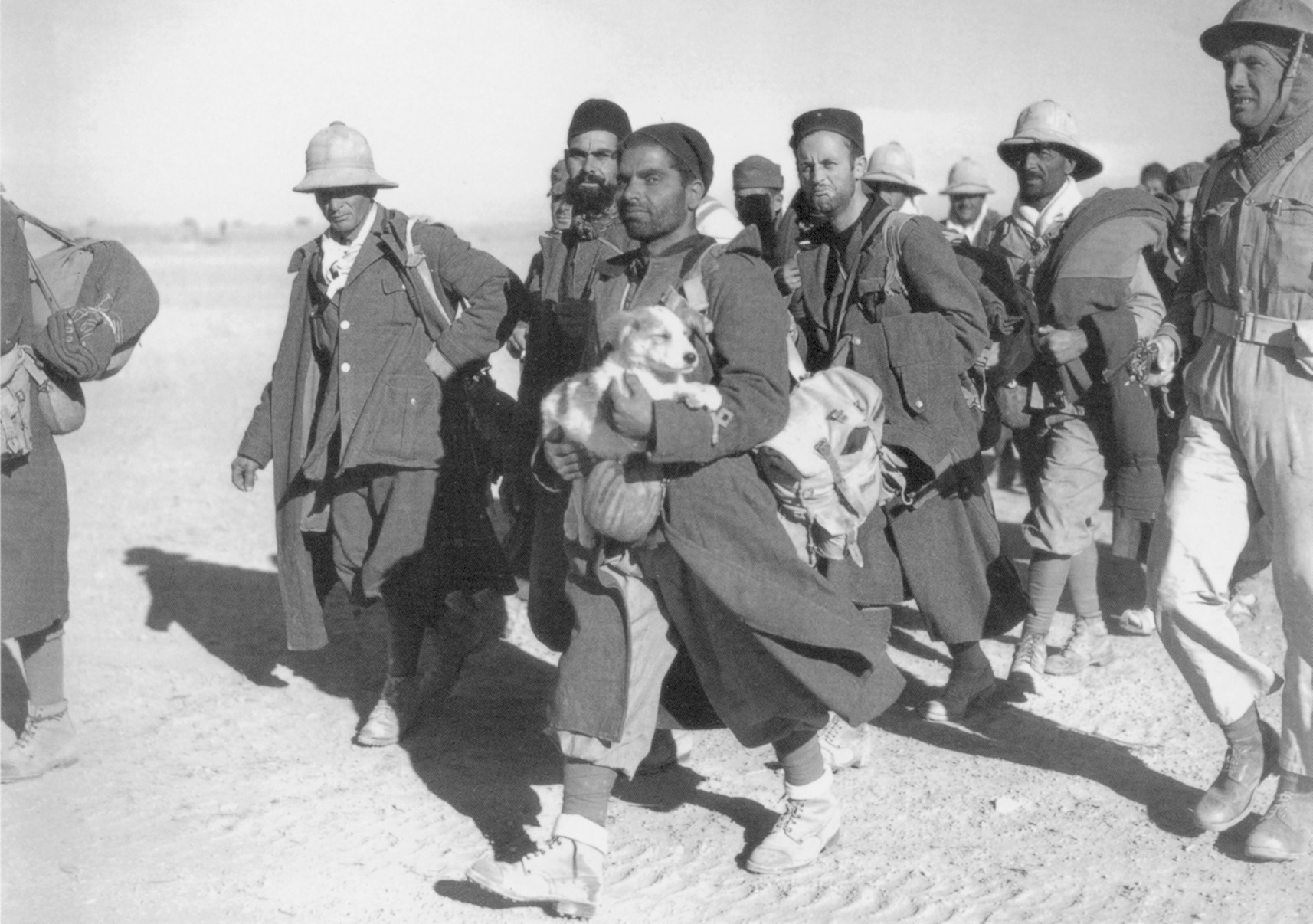
captured by the British during a brilliant two-month campaign in the Western Desert.
O’Connor and Dorman-Smith drove to 4th Brigade HQ for a celebratory drink, and then to a farmhouse near Soluch where half a dozen Italian generals in snappy uniforms and polished boots were held prisoner by the Free French, the elusive “Electric Whiskers” among them. O’Connor was casually dressed in corduroy trousers, leather sleeveless jerkin, tartan scarf, and sagging cap. The Italians were in full uniform, Bergonzoli in spurs. O’Connor pushed through the Italian officers and asked in Italian for the senior general, which was Cona.
“I am sorry you are so uncomfortable,” said O’Connor. “We haven’t had much time to make proper arrangements.”
“Thank you very much,” said General Cona, for his defeated colleagues. “We realize you came here in a great hurry.”
Alan Moorehead also came down from Benghazi and landed a great exclusive, an interview with Bergonzoli, who was exhausted, numb, and suffering from appendicitis. Flown to Cairo for treatment, Bergonzoli would survive and eventually died in 1973.
Lieutenant Roy Farran and his men, ordered to bury an Italian tank crew, found their victims all decapitated at their posts. As they struggled to remove the stinking bodies, the foot of one body jammed on the accelerator and the tank rumbled downhill. Finally, Farran and his men gave up, and simply soaked the tank in petrol and ignited it.
The mess left by the 10th Army was too great for even the Arabs to loot. The wreckage of 10th Army lay strewn around Beda Fomm for years.
O’Connor wasted no time. Within hours, the 11th Hussars, topped up from captured fuel, were speeding along the road to El Agheila, where they stopped, ending the “five-day raid” two months after it began.
In Benghazi, Robertson’s 19th Brigade moved into the town to cheering crowds, and rain. The Australians were filthy, wearing worn uniforms and looked anything but conquerors. The citizens cheered anyway. The mayor, in his official sash, greeted Robertson, who said, “I reappoint you and all civil officers in their present positions. You will continue with your normal work. Get the people to reopen their shops and businesses. Your civil guard will act in conjunction with my own garrison troops.”
British gunners and Australian infantrymen milled around bars and cafés, enjoying rolls, butter, cake, and chianti, paying for food, cameras, clothes, and trinkets with the vast sums of lire captured in Tobruk and Bardia. The citizens of Benghazi were amazed to find that the invaders paid for their food, while the Britons and Australians were amazed to find the lire they had captured as souvenirs in earlier victories could actually be used for something. The merchants soon began to jack up their prices accordingly.
The campaign was over. It was a complete British triumph, one that would be studied for decades in staff colleges. For a loss of 476 dead, 55 missing, and 1,373 wounded, 30,000 British troops had advanced 500 miles in two months, destroyed an army of 10 divisions (including Mussolini’s vaunted Blackshirts), and taken 130,000 prisoners, 400 tanks, 1,290 guns, and two major fortresses. All had been done with minimal supply support in a campaign that climaxed with a daring strategic march and a victory of annihilation. The Italian Army would never again launch an offensive of its own. Fascist Italy’s reputation had been torn to shreds.
So had Graziani’s. He was summarily fired and replaced by his subordinate, General Italo Gariboldi, who dug in to await the inevitable British drive on Tripoli. Mussolini ordered Graziani investigated but found nothing. The marshal resigned his commission on March 25, 1941.
The attack on Tripoli never came. Wavell’s eyes were on Greece. O’Connor sent Dorman-Smith to Cairo for permission to advance, but was too late. “I am beginning my spring campaign, Eric,” Wavell told Dorman-Smith.
The 7th Armoured was sent to Egypt to refit. The 6th Australian and 2nd New Zealand Divisions shipped out to Greece. The new 2nd Armoured Division was to man the line at El Agheila. The British had given up the initiative in the Libyan desert.
This decision, made by Churchill and backed completely by Wavell, to drain off scarce British strength to hold Greece, was considered one of the worst of the war. The Axis had lost the Italian 10th Army, and Mussolini what was left of his reputation, but Hitler was about to rewrite the play on Libya’s barren stage.
“Dearest Lu. Landed at Staaken 12:45. First to C-in-C of the Army, who appointed me to my new job, and then to the Führer. Things are moving fast. My kit is coming here. I can only take barest necessities with me. Perhaps I’ll be able to get the rest out soon. I need not tell you how my head is swimming with all the many things there are to be done. It’ll be months before anything materializes. So ‘our leave’ was cut short again. Don’t be sad, it had to be. The new job is very big and important….”
So wrote Maj. Gen. Erwin Rommel of the German Army to his wife Lucie on February 6, the day of the Battle of Beda Fomm.
The “new job” was to take over an outfit the Germans were shipping to Libya, the Afrika Korps. The shape of the desert war was about to change completely, and a legend was about to be born.
David Lippman is a veteran of the U.S. Navy who last wrote for WWII History on the fall of Hong Kong. He also writes a day-by-day history of World War II for a Web page from his Newark, NJ, home.
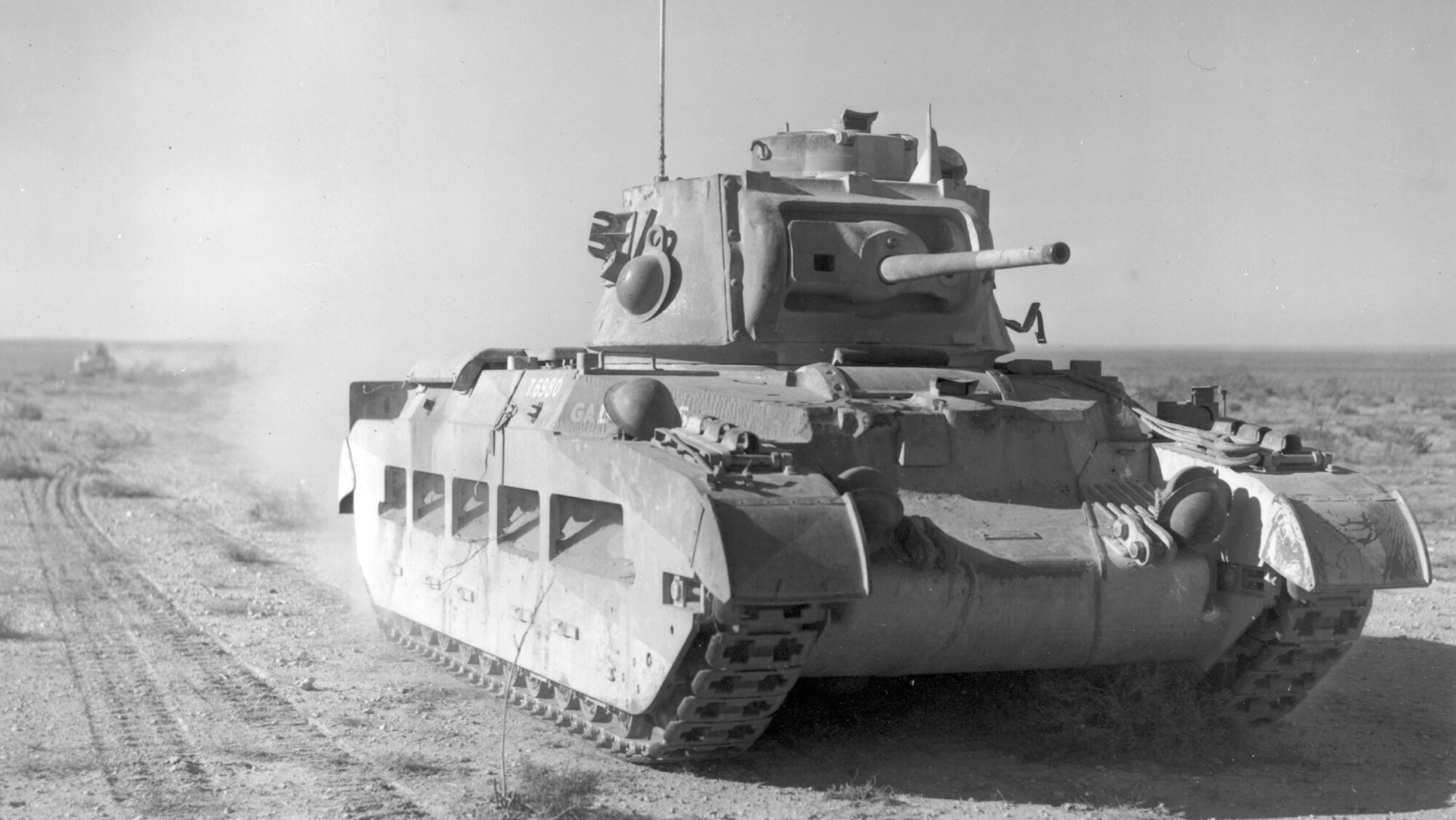
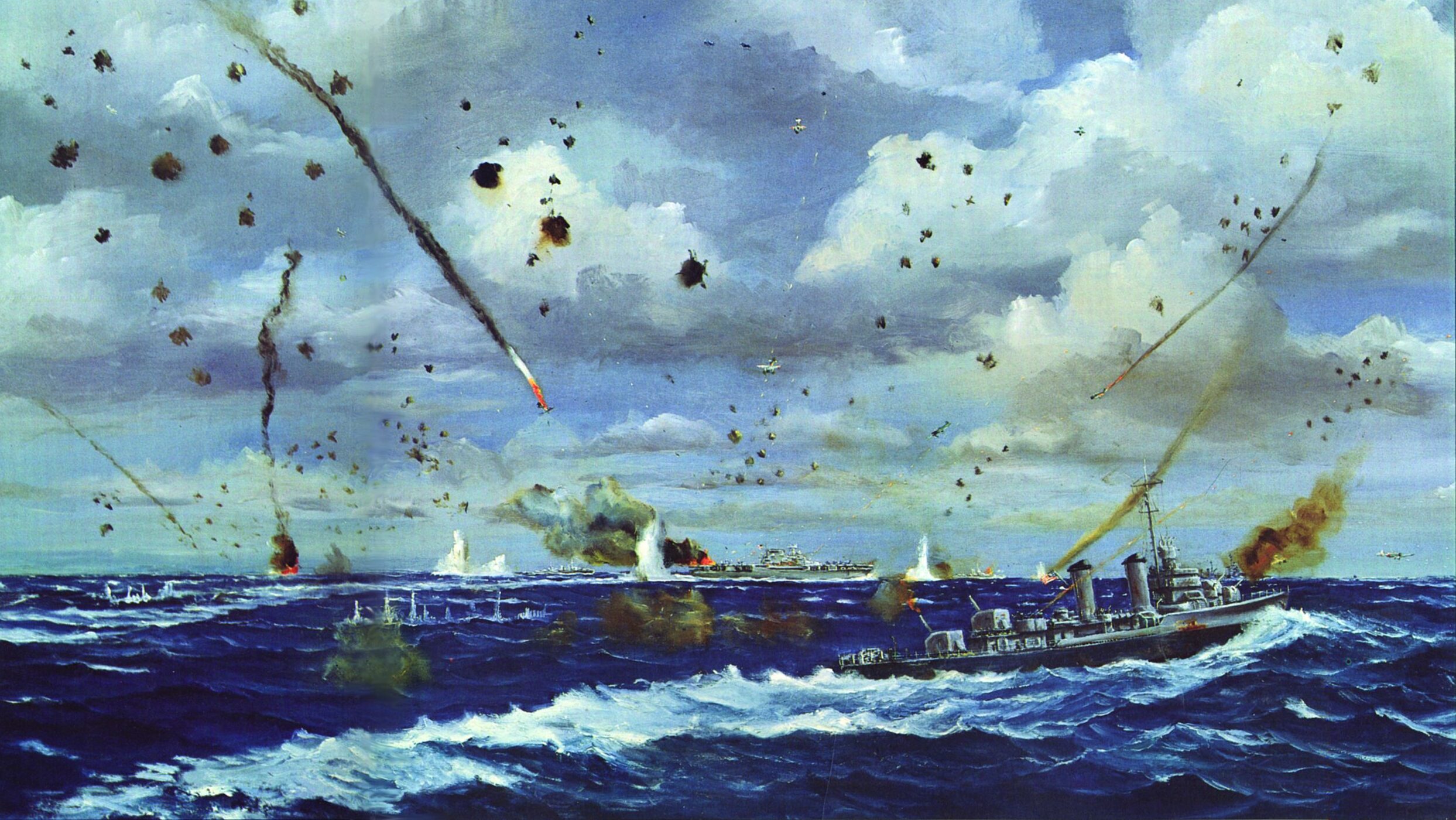
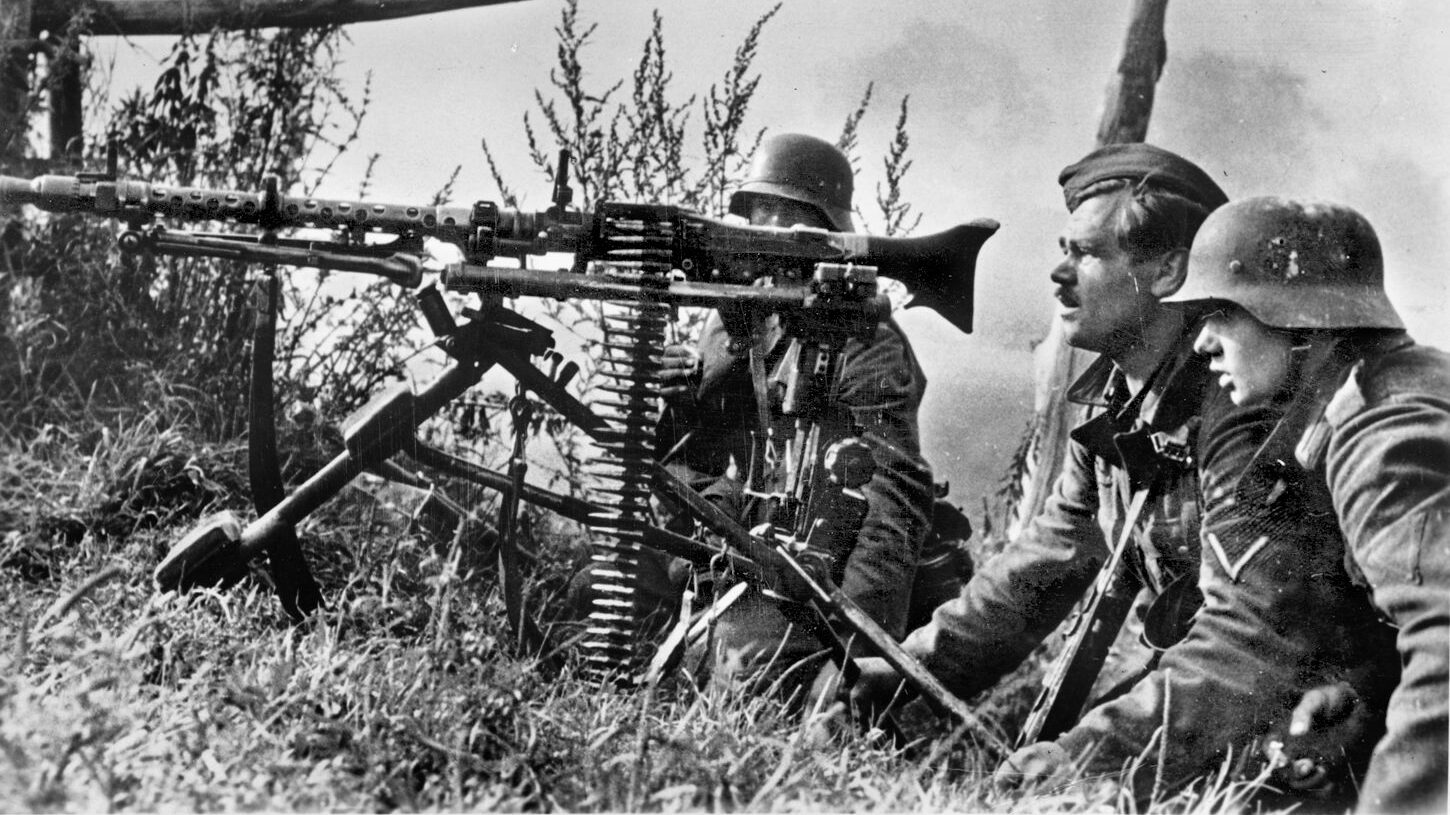
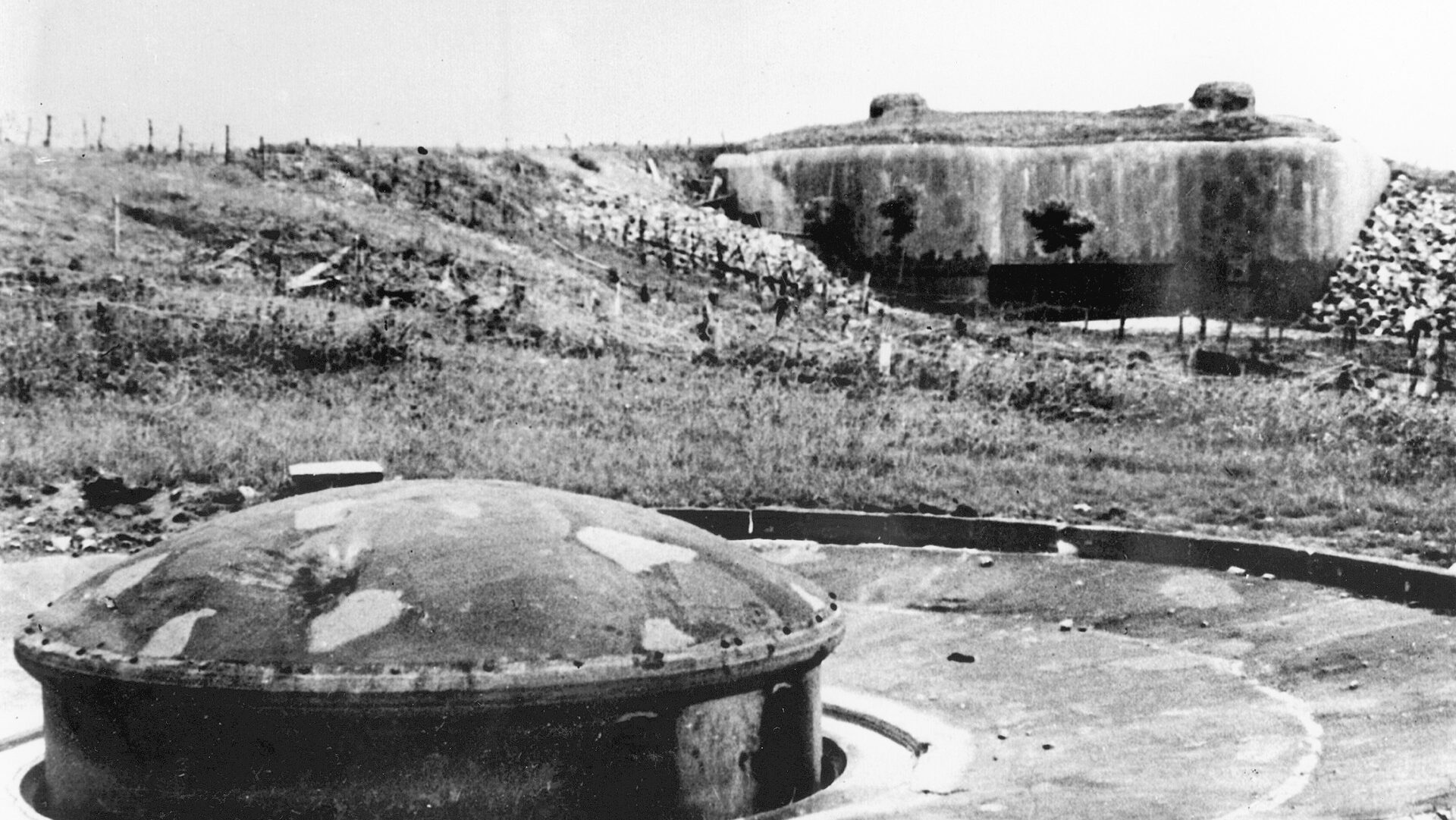
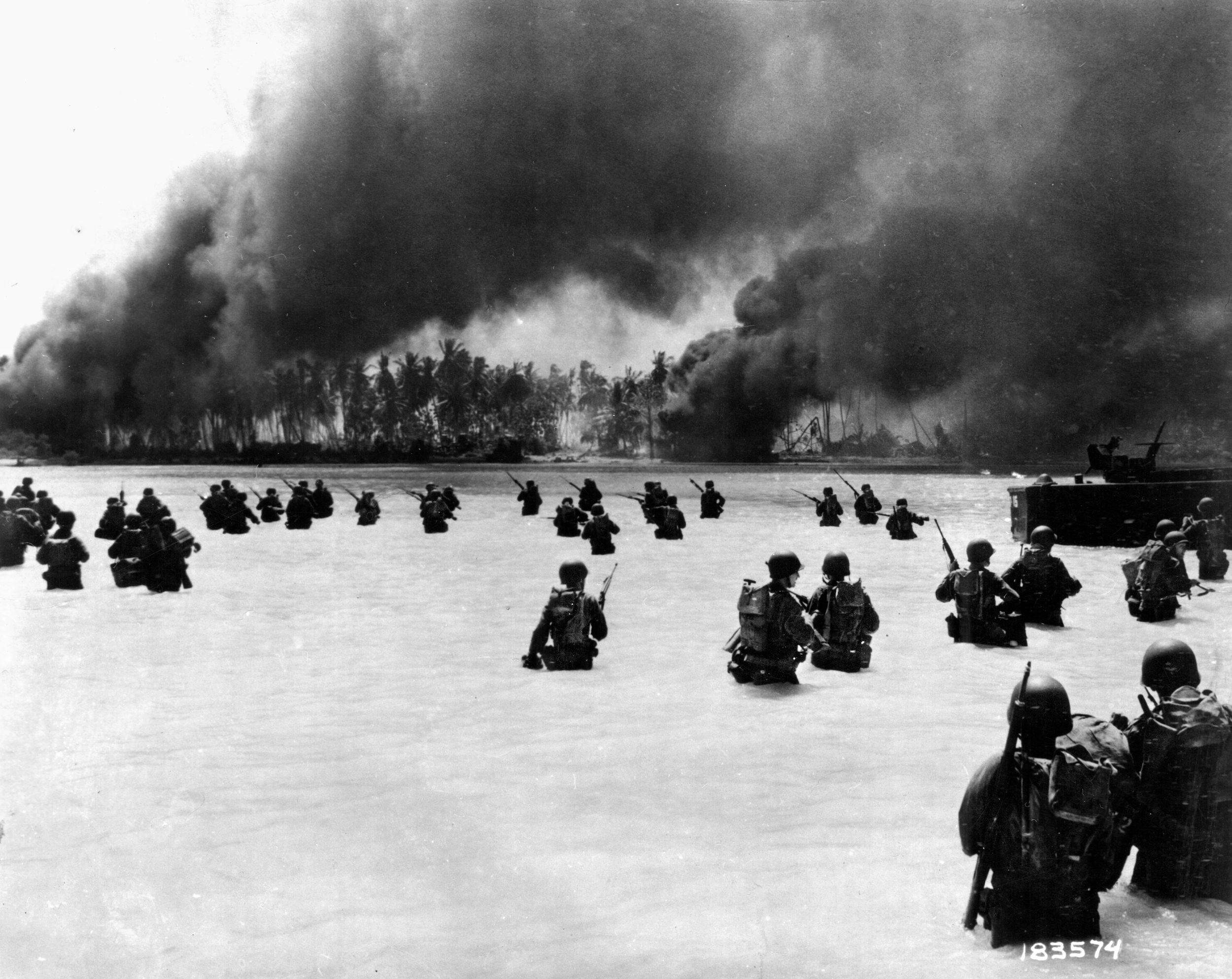
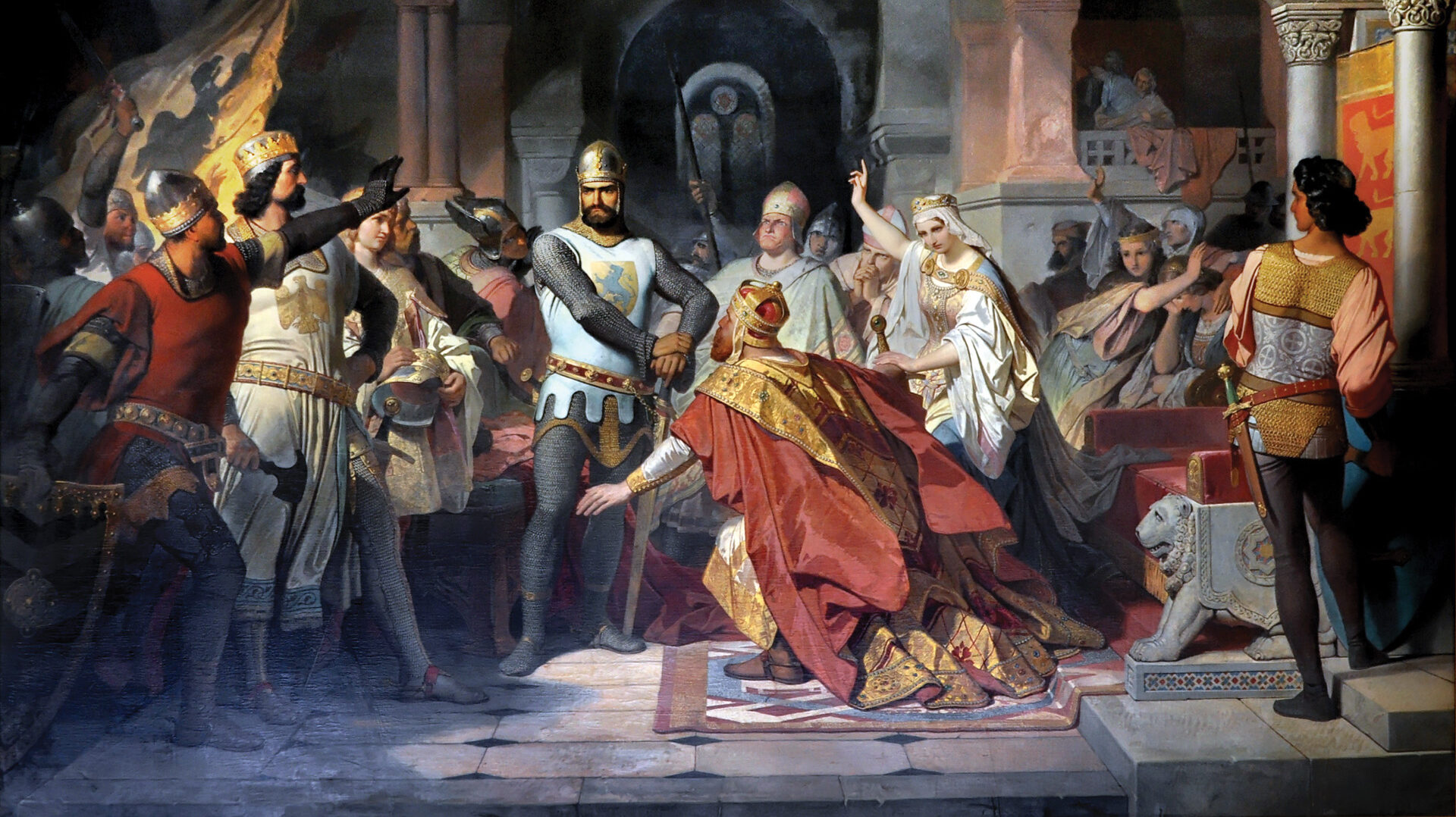
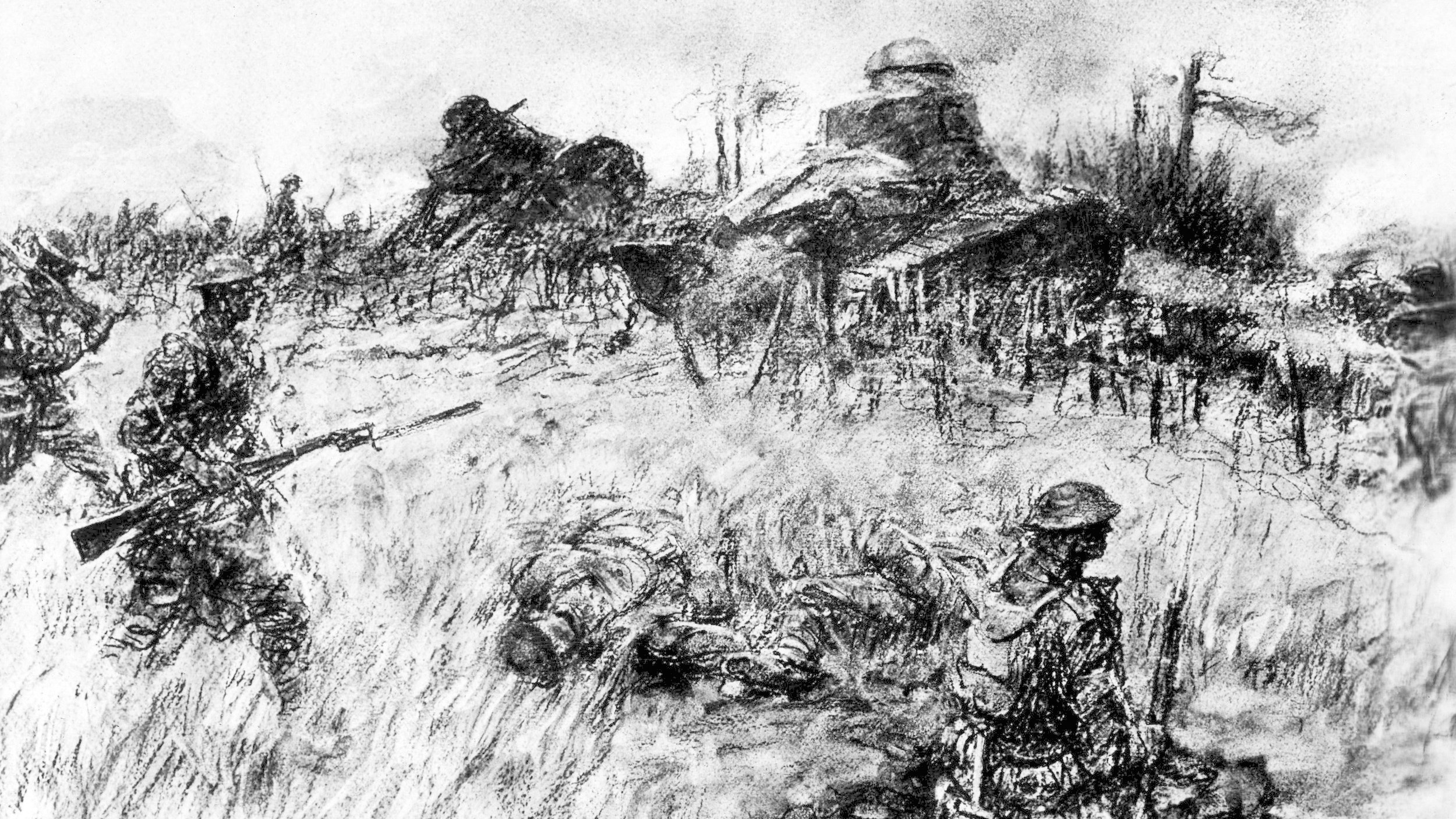
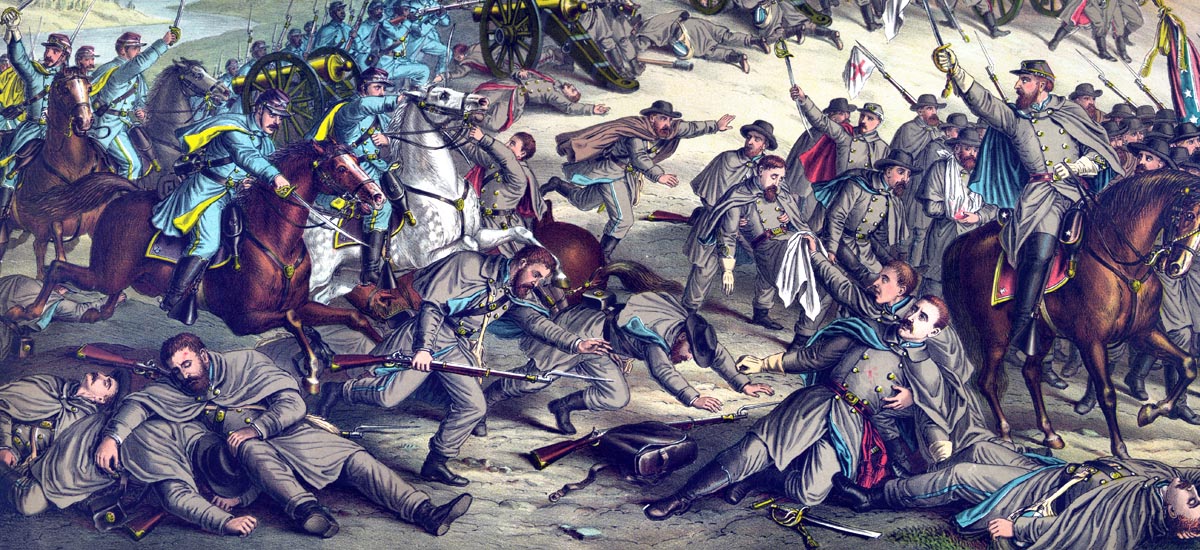
Join The Conversation
Comments
View All Comments